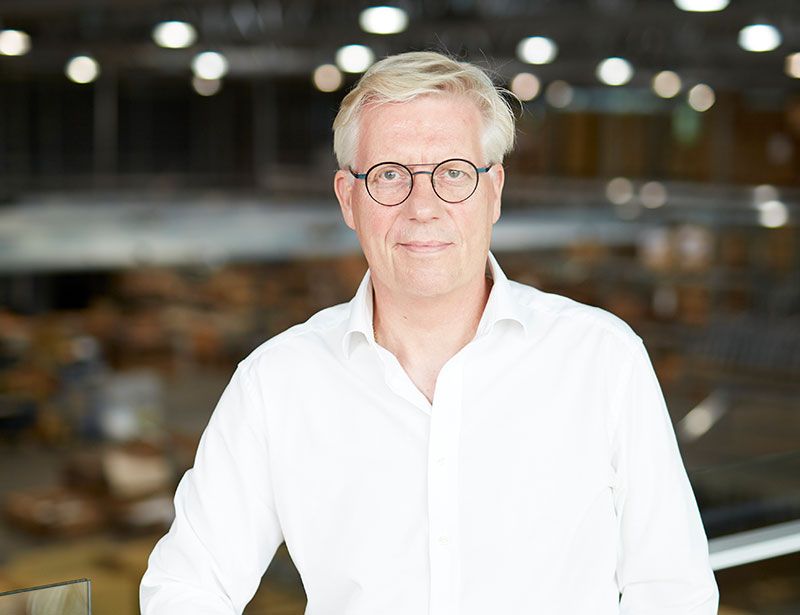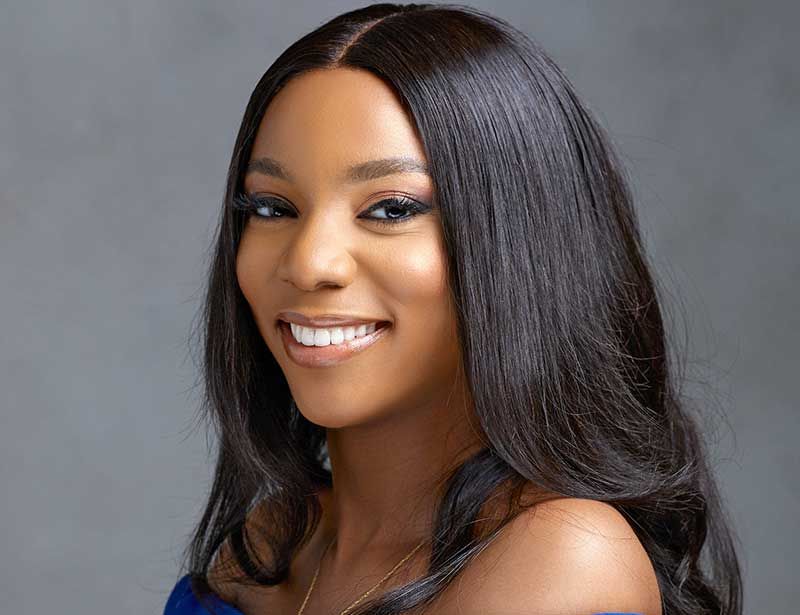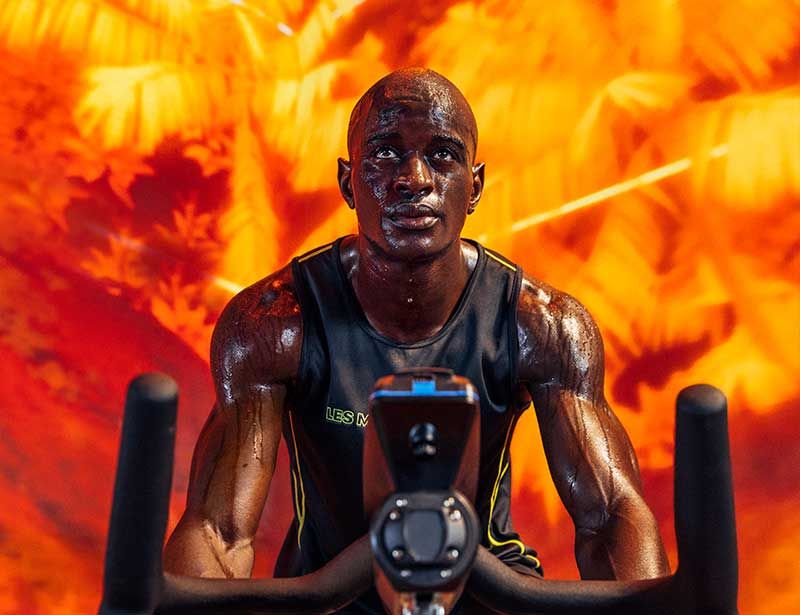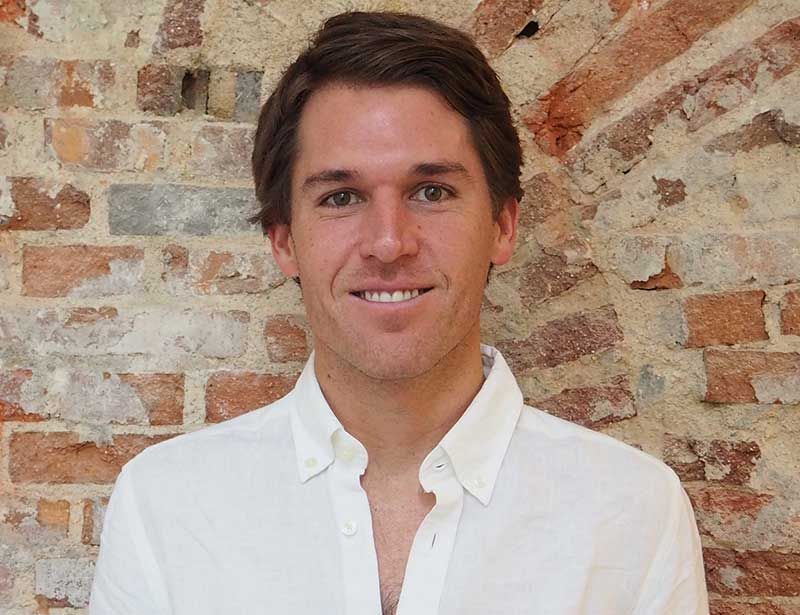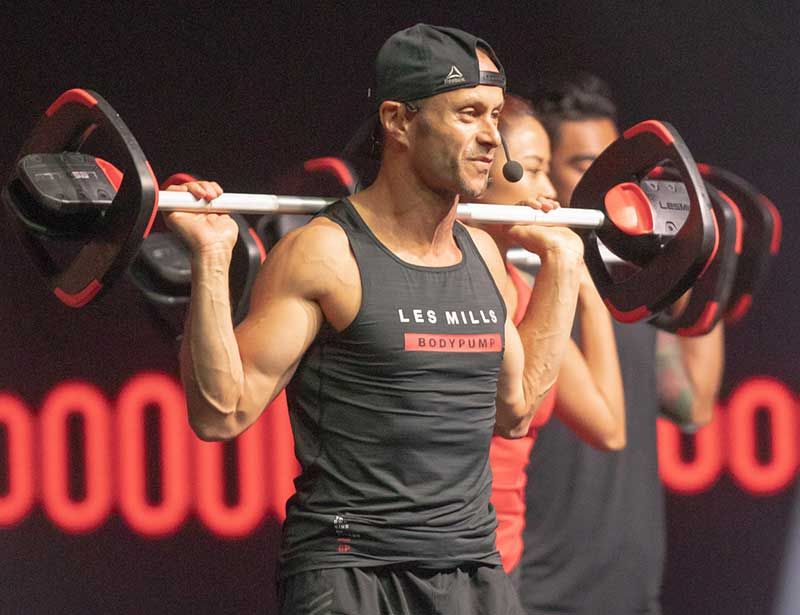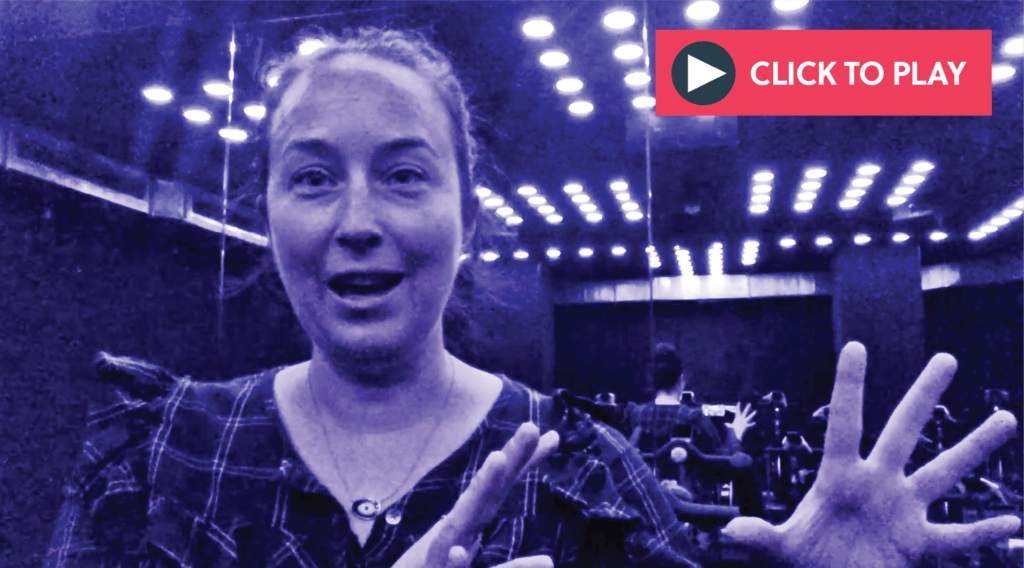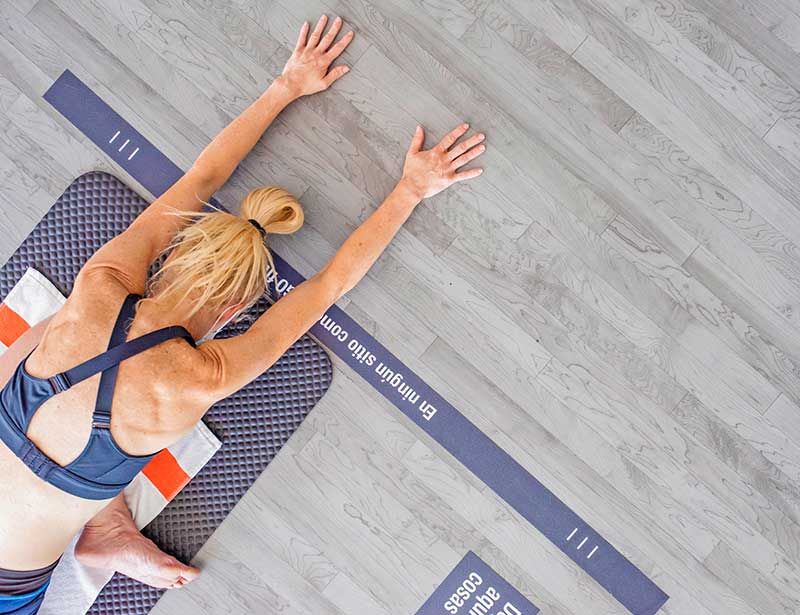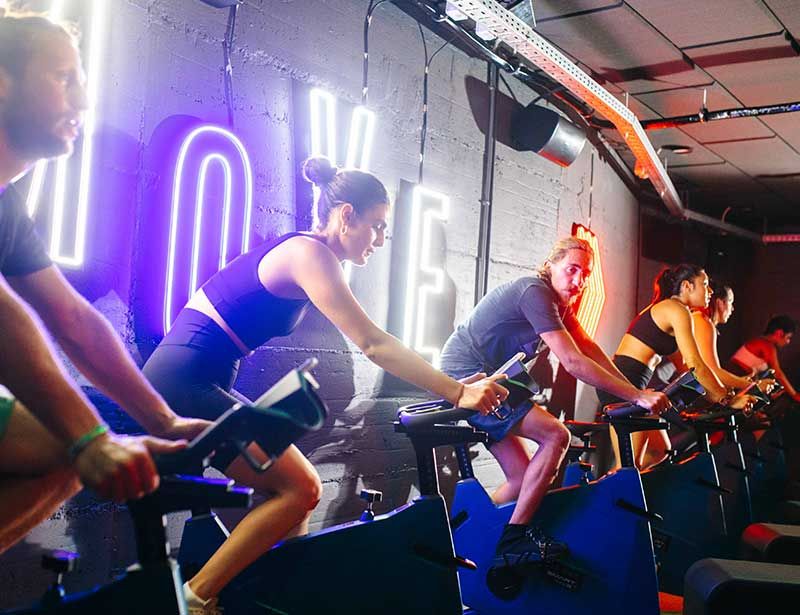It’s time to unite & inspire
Over the last few months, the famous phrase ‘Keep Calm and Carry On’ has been going round and round in my head. No sooner do we begin to put one major challenge behind us, but another quickly appears on the horizon.
We’re seeing pressures on global supply chains cause consumer prices to head for the sky. We’re seeing worldwide logistics havoc and a major increase in energy costs. And of course, there’s always the spectre of one more dance with COVID.
It’s enough to leave even the most ‘glass half full’ among us filled with frustration, fear, anger, bewildermentand negativity, sapping us of our spirit and our creativity.
Back to square one.
After such an extended period of uncertainty, it’s hard for this personal response not to impact our professional mindset, too. Yet we have a place in the world, this wonderful sector of ours.
Consumers are proving this in their buoyant return to our facilities: evidence that the in-person experience, the social connection, will always have a role to play. And within this, indoor cycling goes from strength to strength, rising to the #2 spot globally in terms of most popular in-club class format; in the US, UK and China it’s #1
All of which gives us very real reasons to ‘Keep Calm and Carry On’ as we head into the new year. To force out our negative thoughts and choose positivity. Of course, we must all adapt. We must reinvest in our products and experiences. But my personal belief is that – particularly when each of us feels so personally battered by the last couple of years – we should start with ourselves. We can decide to be positive, kind and caring. We can task ourselves with bringing hope, motivation and a much-needed feelgood factor to our members, then gather our teams and inspire them to do the same. We can, as we discuss in the feature The making of a rockstar, give our instructors license to truly connect and entertain.Everything we do must be more consumercentric than ever, more focused on the human touch – on what we bring mentally and emotionally as well as physically.
So my advice? Scrap the normal rules, get all stakeholders involved and embrace their ideas to bring in the change that’s needed. It’s time to unite and inspire. Let’s make this our New Year’s Resolution, so 2022 is the year we truly become people’s ‘happy place’. Season’s greetings to you all.
Uffe A. Olesen
CEO, Body Bike International A/S
Simi Williams
Simi, what is the Beyond backstory?
I grew up in Lagos before moving to the UK for my A Levels and Master’s degree, followed by a career in investment banking. For nearly a decade, I focused on achieving success in the highly competitive financial industry.
Sports and exercise had always been an integral part of my life. Movement had always been my joy, my therapy. However, as I progressed in my banking career, I worked constantly and stopped exercising – until I became seriously ill and realised I needed to re-think how I wanted to live my life. At that moment, I vowed to always make time for some form of daily fitness. I didn’t leave investment banking at that point, but fitness became a regular part of my life again.
“Music and dance are such focal parts of Nigerian life, and indoor cycling is a great way to bring exercise into this culture”
Feeling the urge to get more exposure to my home, Nigeria, I then transitioned into an investing role at Africa’s largest private equity firm. By pure serendipity, my portfolio companies were largely in West Africa, and it was on a visit to Nigeria that I noticed all the gaps in the fitness market there.
For me, fitness goes beyond aesthetics. It’s also about how you feel. It’s about one’s mental state and the human connections you develop while working out in an encouraging community of like-minded people. But I found this was missing in Nigeria, as was the element of hospitality. I saw opportunities to bring joy not only to myself, but also to the local community in Nigeria – and beyond. In 2018, the idea of Beyond Fitness was born.
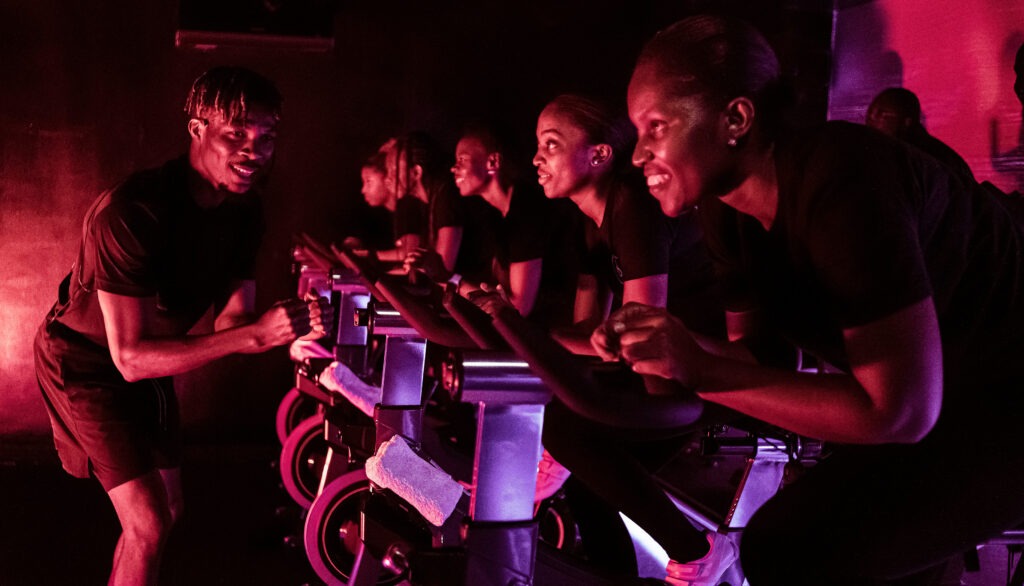
It required grit and a change of mindset – not letting myself be defined by my previous job or job title – but I was determined. I wanted my life to have real purpose. I wanted to do something about the gaps I’d seen. And when I attended a few fitness industry conferences, it cemented my goal. I felt I was in the right place, at peace with my decision. I felt compelled to move ahead with my plans.
While still in London, I raised funding, secured the location, appointed my suppliers and commenced a talent search for my team. Then, in July 2019, I moved back to Nigeria.
Can you describe Beyond Fitness?
Beyond Fitness is an independently owned, multi-discipline fitness destination that speaks the language of movement and connection. It’s a place of freedom where you are never judged, but always encouraged to push past your perceived limitations.
“There isn’t much to do in Nigeria and people are bored with the mundane, so they’re willing to spend money on our feelgood experiences.”
For our team, it’s also about going above and beyond in everything we do, so our club is people’s happy place. Our resilient, uplifting community is dedicated to helping you live a healthier life. We push for progress over perfection and encourage people to genuinely care about those they’re sweating alongside. It’s all summed up in our motto: Work Hard, Love Harder.
How central is cycling to the concept?
I originally considered opening a standalone indoor cycling studio. Regardless of age, shape or fitness level, this high-intensity, low-impact workout creates a positive mindset and is loved by millions worldwide.
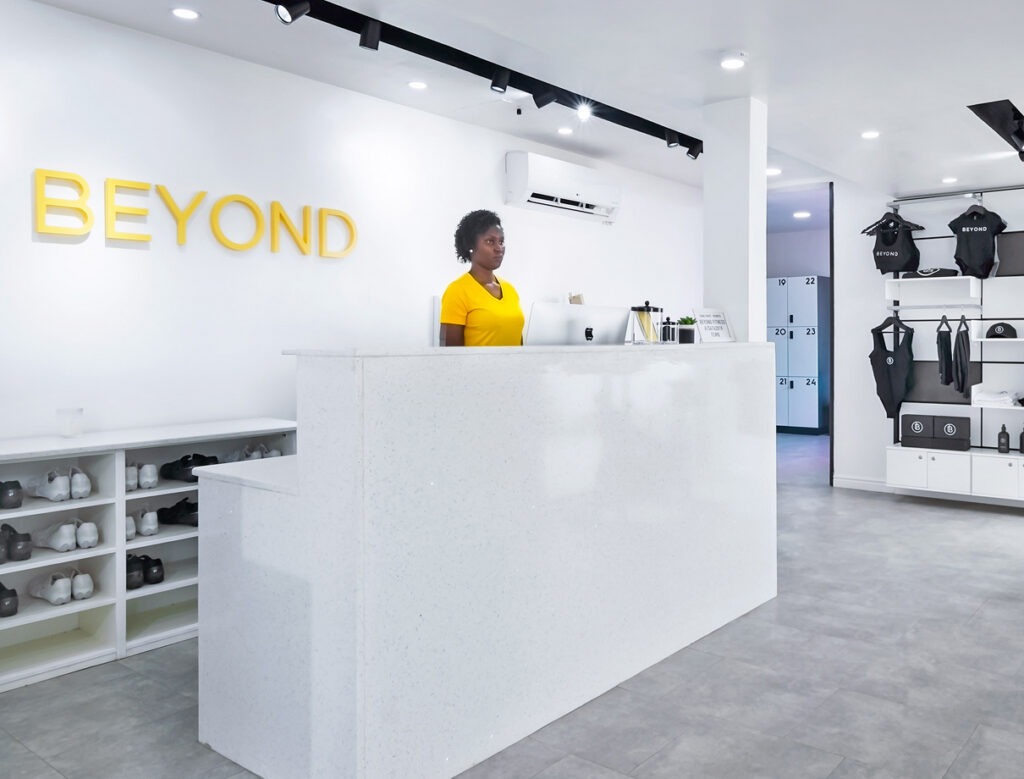
However, research has shown significant benefits of variety in one’s workout, so our inaugural location in Lagos unites three fitness experiences under one roof: an indoor cycling theatre with 25 bikes; a movement studio offering yoga, barre and mat pilates; and a strength studio for dynamic weight sequences and muscle-building exercises.
Our cycling classes are rhythm rides. Music and dance are such focal parts of Nigerian life, and indoor cycling is a great way to bring exercise into this culture. I see it as one of the best workouts to get people moving; with an amazing playlist, a cardio workout becomes a by-product of the ‘party on a bike’ experience.
We offer 45- and 60-minute classes, as well as ‘double-shot’ workouts with 30 minutes on the bike for cardio and 30 minutes off the bike for strength and flexibility. I worked with a master instructor in London to develop our signature cycling format, and each instructor then injects their own personality and, critically, their reading of the room.
How unique is Beyond within Nigeria?
Across Africa, there’s no real focus on fitness as a brand or the customer experience. Gyms are lacklustre facilities + equipment. In contrast, Beyond combines a talented, caring set of trainers with a members-first approach to deliver the utmost in friendliness and bespoke customer service. Everything is done intentionally, from the scent and lighting to the minimalist design that helps people de-clutter their minds.
“Where obesity was once seen as a sign of affluence, good health is now seen as wealth in Nigeria”
We’ve approached things from a hospitality mindset, placing a huge focus on training our team – something that certainly marks us apart – and obsessing over details. In our locker rooms, for example, we’ve recognised how important haircare is to African women and provided spa-like showers and a fully stocked blow dry/braiding bar with everything they need to go straight to work after class.
To prioritise the human experience, we’ve also included generous social gathering areas, relaxed seating, an energy bar and an outdoor swimming pool. Lagos is a high-pressure city, so Beyond provides a third space where people can press ‘pause’ and connect with like-minded individuals.
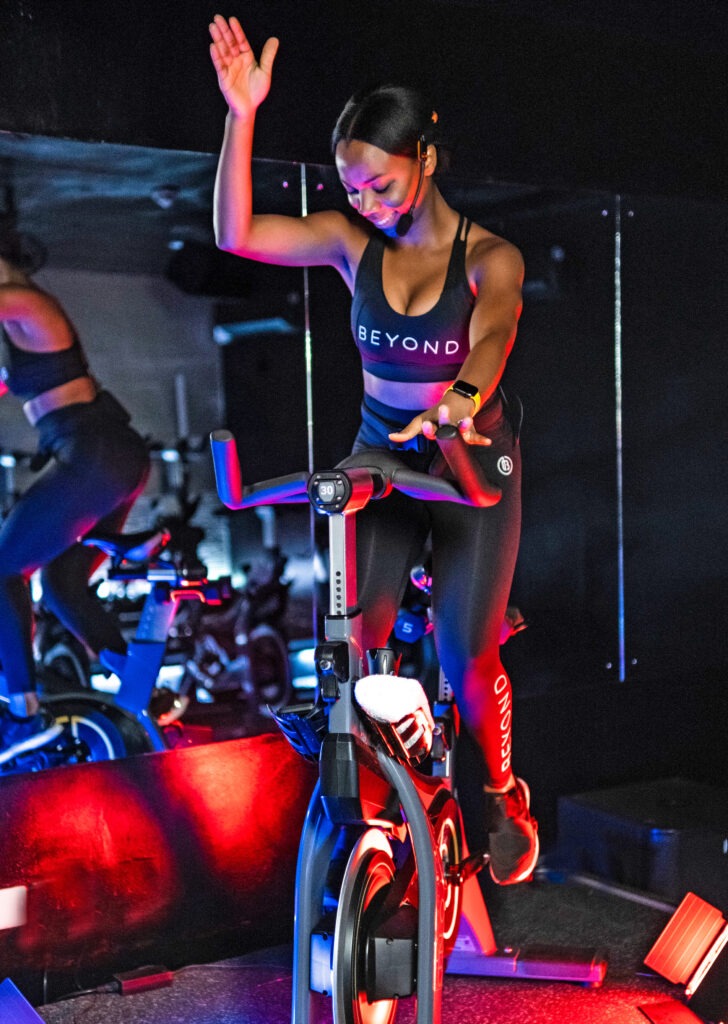
Is Nigeria ready for boutique fitness?
There’s a real need for spaces like ours. Other than going to the beach or out for dinner, there really isn’t much to do in Nigeria and people are bored with the mundane. They’re willing to spend money on the feelgood experiences we offer at Beyond.
We charge around US$18 a class, or around US$125 a month for membership, but we deliver a service that meets global standards and people see the value in it.
Also, where obesity was once seen as a sign of affluence, good health is now seen as wealth in Nigeria. Consumers seeking luxury and status are willing to pay a premium for a boutique studio offering impeccable service.
We have had to do a bit of awareness and grassroots marketing to introduce the new concept, but the moment someone walks through our doors they get it – and they tell their friends. Our conversion rate is extremely high, and it’s exciting to see people discover boutique fitness for the very first time.
How challenging has the journey been?
There have been many points where I genuinely felt it wasn’t going to happen.
The first obstacle was securing funding. I set out to raise US$500k and was lulled into a false sense of security when I quickly raised US$150k from my former colleagues and bosses. With their encouragement I decided to push on, not really knowing what I was getting myself into!
“There’s a huge talent gap in the Nigerian fitness sector. The prevailing belief is that you don’t really need any qualifications so long as you look the part.”
I found two investors for the remaining US$350k, but on the day we were meant to sign the term sheet, I had just found out I was pregnant and decided to be honest about it. They walked away.
I started having doubts, but my faith in God anchored me and I decided pregnancy wasn’t going to stop my ambitions. It did delay fundraising until 2019, however – and then along came COVID, everything started taking much longer and I ultimately needed to raise US$750k. We got there in the end, though!
How did you handle COVID disruption?
COVID hit when we were mid-construction, so we ended up launching digitally first, renting out our 30 bikes, offering Zoom sessions and building a digital platform for stretch, strength and cycling workouts. That income sustained salaries for the whole of 2020, which was critical as it allowed us to focus our funds on completing the build.
We actually got a lot of attention from overseas during COVID, too. Nigeria has some Grammy award-winning Afrobeats artists and we play a mix of local and global music at Beyond, so we got a lot of interest from the African diaspora. That opened my eyes to how we can eventually scale the business globally.
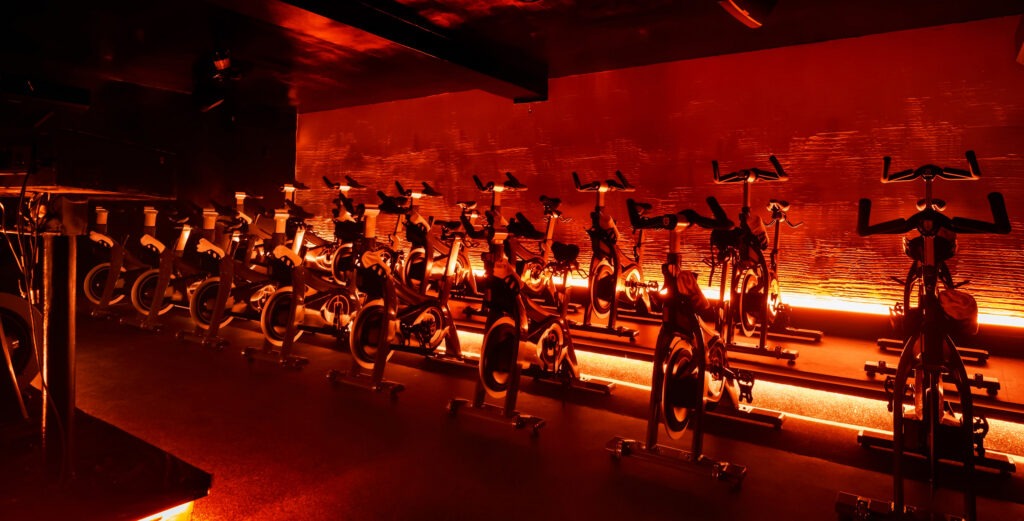
At a personal level, the transition to motherhood really helped me during COVID. I always used to be a control freak, but my daughter has taught me that control is just an illusion: you have to let go and surrender. Learning how to do that helped me mentally navigate the craziness of COVID.
Has Nigeria itself presented challenges?
Even though I grew up in Nigeria, it was a real culture shock coming back. In the UK, there was a reliable infrastructure. Now, in Nigeria – if I wanted to guarantee an exceptional customer experience – I realised I was going to have to build everything myself, from a water treatment plant to drainage to solar panels for a back-up power supply.
“It’s so hard to do something excellent here in Nigeria that most people don’t even bother trying. But for that same reason, there are gaps and opportunities.”
Then came the training requirement. It’s fun to empower people, but they have to be ready for it and there’s a huge talent gap in the Nigerian fitness sector. The prevailing belief is that you don’t really need any qualifications so long as you look the part. I clearly don’t agree, so I’m putting my whole team through a rigorous training programme. That will continue moving forward, too: whenever we take on a new instructor, it will be about three months before they’re ready to teach.
Then there are the challenges around being a woman trying to do business in Nigeria. You’re so often overlooked and underestimated. I’ve never been phased by being a minority, though: I’ve had to be mentally and emotionally resilient throughout my professional life. So I dug deep, stood firm and got back to speaking Yoruba so I could deal with people in their own language.

On top of this, we’ve had an economic downturn in Nigeria: our currency devalued by 18 per cent in six months. That clearly brings challenges when you’re working with overseas vendors, and even more so with the current COVID supply chain issues.
I’ve also had to be intentional about doing things the right way and leading with integrity; in Nigeria, doing things the right way is sometimes more difficult than taking shortcuts. These are also shaky times when it comes to freedom of speech and protests, so we’ve had to think a lot about security at the club – and during recent protests, we even had to work out how to support team members who were unable to leave their homes or who were stuck on the premises.
“I see this as an African business, not a Nigerian business, and I’d like to spread the currency risk as soon as possible. Our next location could therefore be outside of Nigeria.”
The sheer amount of mental resilience it’s taken has probably been the biggest surprise for me throughout this whole process. Transitioning to entrepreneurship, motherhood and a new country all at the same time has been hugely challenging.
The best way I can describe it: it’s so hard to do something excellent here in Nigeria that most people don’t even bother trying. But for that same reason, there are gaps and opportunities.
How is Beyond performing so far?
We opened in September 2021 and the 87 local customers who had rented our bikes during lockdown were the first to join, bringing their friends with them.
We’ve already reached 495 visits a month, and that’s without any marketing and with just three classes a day, Monday to Saturday, across our cycling and low-impact studios only; we’ll launch the strength studio in Q2 2022.
Given there are 20 million people living in Lagos, I’m confident we’ll hit our target of 1,500 monthly visits once COVID fears start to subside – and especially once we start to expand our timetable. We currently have three instructors, including myself, but we’re auditioning more with a view to having six full-time instructors by February, and up to eight once all three studios are at full speed. At that point, I expect to be offering six to eight classes a day, including Sundays.
My aim is to reach profitability on this first site as soon as possible.

And after that?
I’m so grateful to have come this far, and have to credit the amazing support I’ve had from my husband, family, mentors, investors and the amazing Beyond team. But it’s just the beginning.
I have an open mind in terms of growth plans, but I do see this as an African business, not a Nigerian business, and I’d like to spread the currency risk as soon as possible – something that’s always a factor when running a business in Africa.
Our next location could therefore be outside of Nigeria – most likely in Accra, Ghana – and I plan to start looking for it in early 2023. I would also like to open in Nairobi, Cape Town and Johannesburg, and I believe there’s scope for more Beyond Fitness studios in Nigeria too. It’s about finding pockets of professional class people, with the right per capita income, who value boutique fitness. It’s also about finding the right local partners with the same values and passion as us.
This first club is our flagship – the place where we experiment, learn what people really want and make sure we can do it really well before we launch – but I see the model being nuanced for each new market. We need to be nimble enough to pivot locally, and that includes future locations potentially having only one or two exercise rooms.
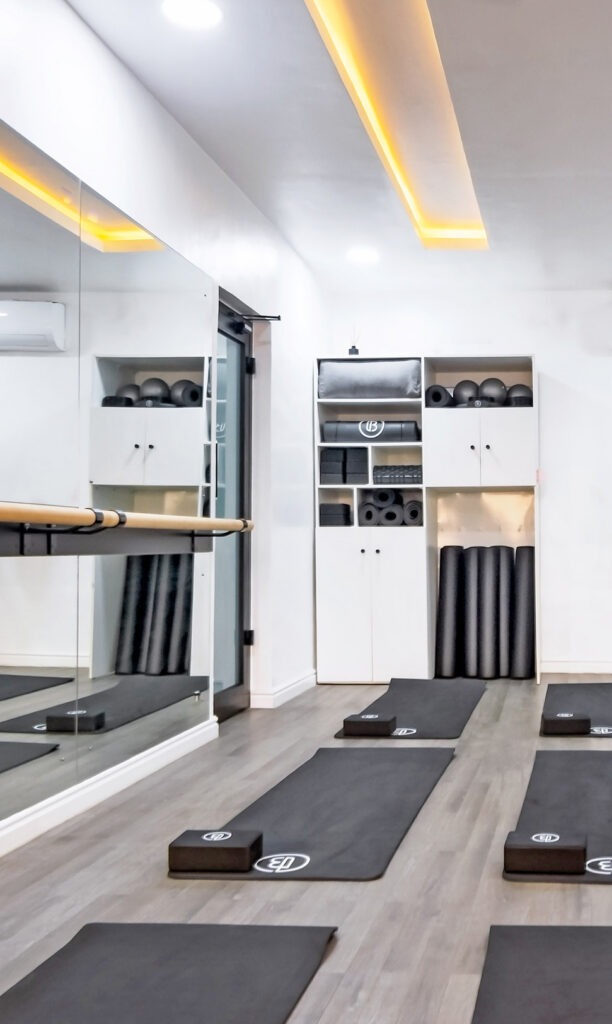
Alongside the physical clubs, I also want to expand our Academy. There isn’t a body that’s really doing this in Africa – we’re already the leaders – so I’m looking to scale it up to deliver training and certifications across Africa. I want to empower others to take fitness seriously.
And then finally, I see great potential to harness digital not only for an online class offering, but to create strong sales channels for our merchandise, bodycare products and healthy snacks outside of the physical space.
What drives you personally?
I want to bring joy to others, drawing on my experience and my love for wellness to deliver happiness and enhance people’s lifestyles.
My daughter is also an inspiration to me, fuelling my passion. I know that me showing up as my best self is important to her becoming her best self. Being a mother has given me even more drive to really go after things and remind myself that limitations are self-imposed. If you believe in yourself, you can do anything.
And finally, I believe in building a better Nigeria. In Africa, the impact of a well thought-out business is exponential, from creating revenue streams for lower income households to inspiring others to be the change they want to see.
I believe it’s time for returnees like me to come in and make a difference. Because if not us, then who?
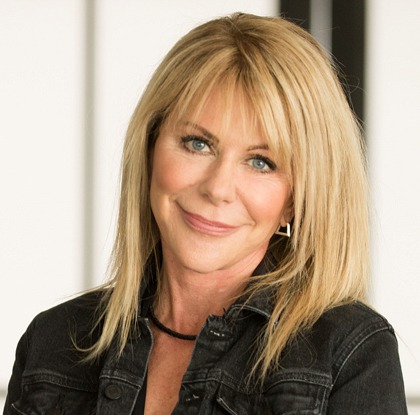
Building from the future, backwards
We speak to Barbara Chancey, Beyond’s studio designer
How did you approach this design brief?
Developing a personal relationship with Simi to understand her core values was the catalyst for this bold brand that stands for something much deeper than fitness. Simi believes in welcoming people graciously and maximising their potential. She exudes curiosity and grit, and her boundless positive energy is infused into every aspect of the studio.
Any favourite design elements?
One of my favourite features is the wall-mounted, modular retail system – a timeless approach to function and beauty that showcases Beyond’s wide assortment of clothing, shoes and accessories. I also love the small social niches nestled throughout the studio to encourage human interaction.
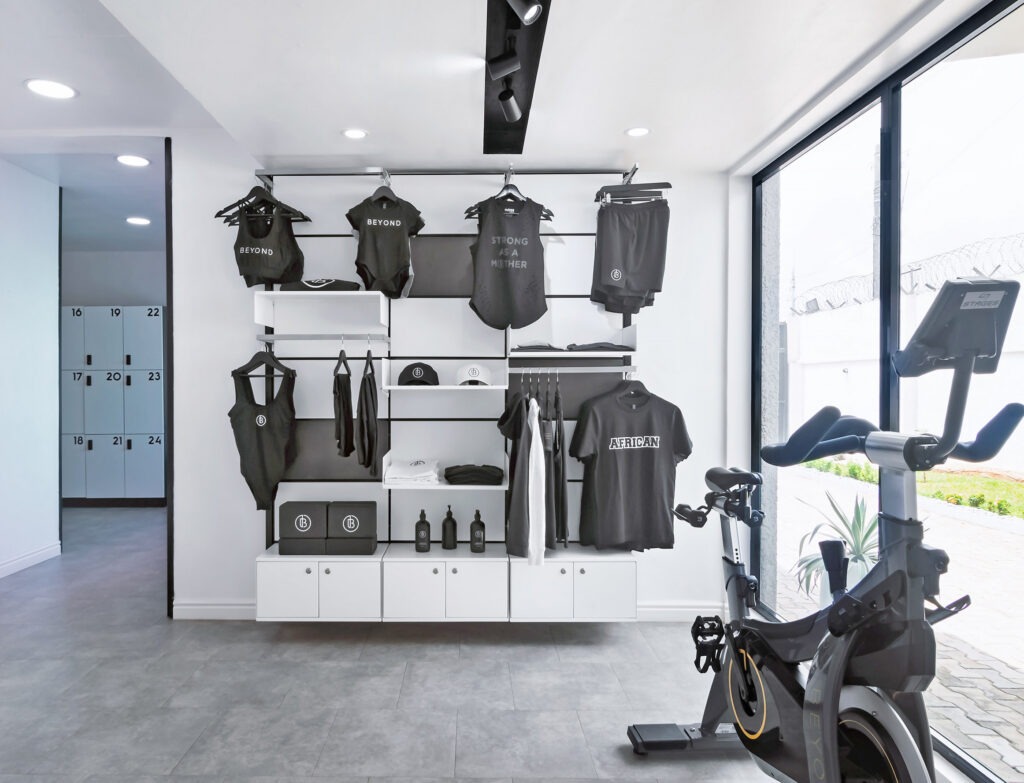
What was it like working on the project?
From welcoming the birth of Simi’s daughter to laughing with the general contractor on weekly Zoom calls, this project was far more than building a fitness studio. It’s been a highlight of my life.
Simi is a trailblazer with a brilliant mind who keeps moving forward, opening new doors and doing new things. Her business acumen and executional skills are exceptional, with a level of professionalism we rarely see.
What’s special about Beyond?
The true measure of a space is how it makes you feel, and Beyond has a ‘secret mission’ of sorts: it’s there to ignite dreams and aspirations, to wake people and make an impact.
Simi’s vision and mission for Beyond is all about the future. It was built backwards, starting with a future idea of what can be and setting out to fill the gaps between this vision for Nigeria and what exists today. This is vitally relevant brand, with Simi’s mantra – Work Hard, Love Harder – a constant reminder of her purpose and passion to make her corner of the world a little better.
Back in the saddle
Let’s jump straight to the punchline, shall we?
Amid what’s being dubbed a global “live revival” – fitness fans flocking back to gyms and health clubs post-lockdown, seeking greater motivation and social connection after months of solitary home workouts – indoor cycling is enjoying its own revival.
From fifth most popular group exercise format in 2018, indoor cycling has leapt up the ranks to claim second place in 2021, favoured by 30 per cent of group exercise participants and sitting just behind HIIT (31 per cent). Note, too, that these figures are global; in the US, UK and China, indoor cycling is the #1 class format.
These are just some of the stats from the Les Mills 2021 Global Fitness Report, published in September and sharing insights from 12,157 consumers across five continents.
“Those who do cycle classes attend their club more frequently than non-class gym members: 4 versus 3.5 times a week”
Creating good habits
Indoor cycling being on the global group exercise podium was, of course, already music to the ears of all of us at RIDE HIGH – but we didn’t want to stop there. Instead, we asked the Les Mills team to dig a little deeper into the data to see what else they could tell us about indoor cycling.
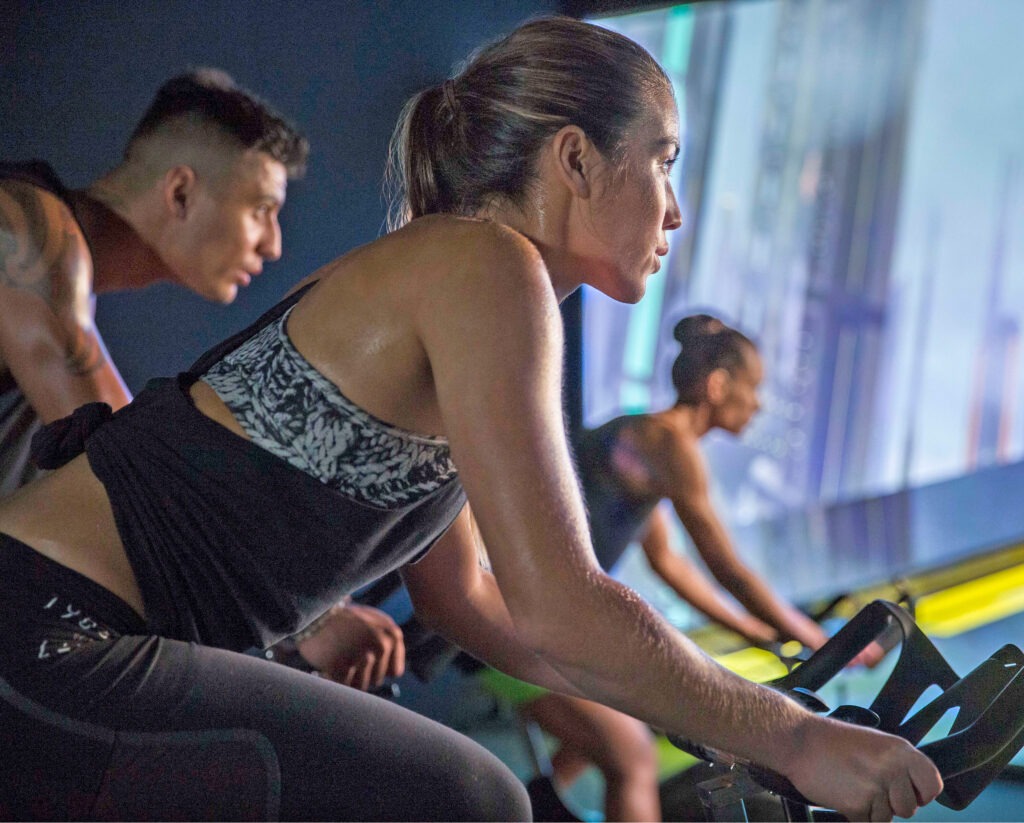
What really grabbed our attention was the fact that indoor cycle class users have ‘better’ behaviours compared to other gym-goers. The differences might be small, yet cycling consistently comes out on top.
Those who do cycle classes attend their club more frequently than non-class gym members (4 times a week versus 3.5 times a week). They also have slightly longer gym tenure (3 years) than those who do other class formats (2.8 years), or who don’t take part in classes at all (2.7 years).
Cycle class participants also do very slightly more classes a week (3.4, including but not necessarily exclusively cycling) than those who don’t cycle at all (3.3 classes a week).
In terms of all-round exercise habits, indoor cyclists also exercise more frequently than participants of other class types (4.9 versus 4.7 times a week on average, with these figures including all forms of in- and out-of-club exercise).
It’s also great that cycling extends all of this to males as well as females, with men more likely to take part in indoor cycling than other types of class: 52 per cent of cycle participants are male, versus an average 44 per cent across other class types.
“Lockdown has spawned a new generation of fitness fans: 27 per cent of regular exercisers describe themselves as absolute beginners”
Shifting priorities
Priorities have also changed over the last three years, although this isn’t unique to indoor cyclists.
Back in 2018, the top three things class participants looked for across the board were quality of instructor, time of day and type of class. Now, although quality of instructor is still the #1 priority, music comes second – up from sixth place in 2018 – followed by quality of equipment, up from 10th place.
The latter two priorities are particularly marked among indoor cyclists, who are more likely to look for quality music than those doing other classes (27 versus 23 per cent) and quality equipment (25 versus 21 per cent).

This has major implications for operators, who must acknowledge they are now catering for members seeking a quality experience, not simply a convenient workout.
Another interesting equipment-related finding is this: that in spite of the far larger price tag, a stationary bike is the third most popular piece of home fitness equipment, after dumbbells at #1 and yoga mats at #2.
Let’s now set all of this against the backdrop painted by the Les Mills report – one in which the pandemic has changed fitness habits potentially forever, with key trends emerging that will shape workouts in the years to come.
Growth opportunities
The pandemic has prompted consumers to prioritise their health, presenting fitness providers with growth opportunities as clubs return to full capacity.
Among Les Mills survey respondents, 50 per cent say they are now focusing more on their wellbeing than pre-COVID. An impressive 82 per cent say they regularly exercise, or plan to do so soon, and 75 per cent of this group do gym-type activities. Club visits per member are also up 10 per cent in markets where restrictions are no longer in place.
Lockdown has also spawned a new generation of fitness fans who have taken tentative first steps into fitness and are now deciding what comes next, with 27 per cent of regular exercisers describing themselves as ‘absolute beginners’.
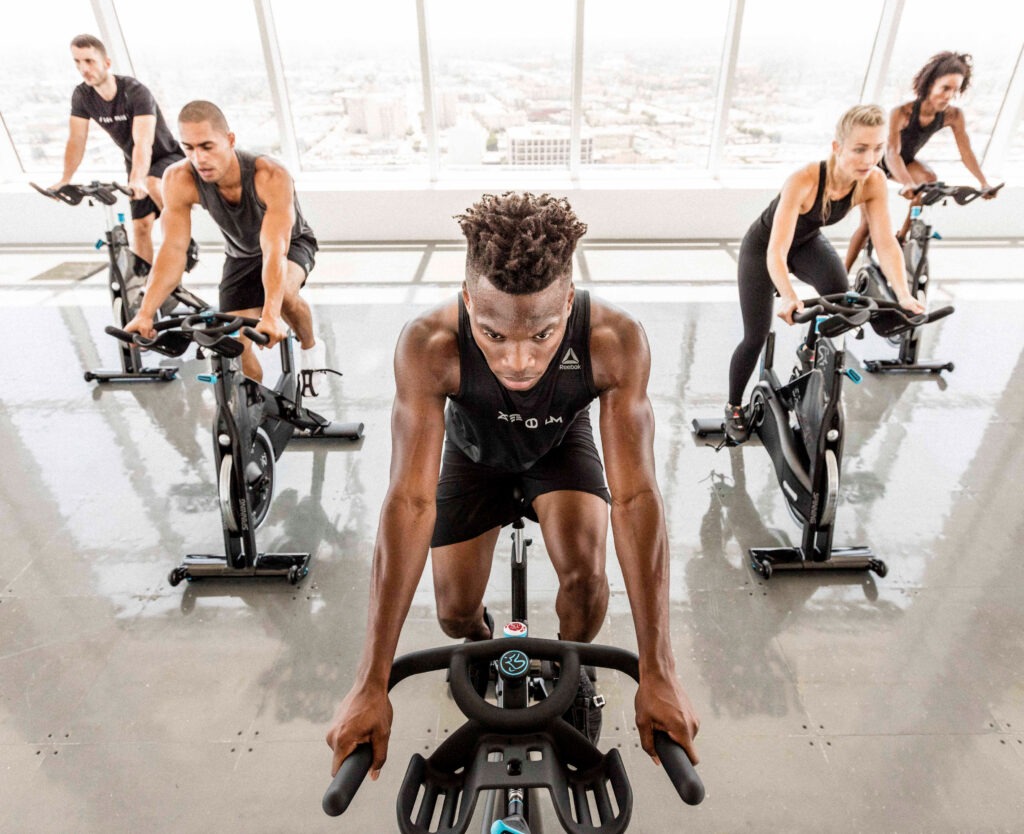
Opportunities abound for operators who can appeal to these groups and understand the unique barriers they face: although 81 per cent of beginners are interested in group activities, 66 per cent say they currently prefer to exercise alone, suggesting a confidence chasm that needs to be bridged before beginners feel fully comfortable.
“Indoor cyclists are significantly more likely to look for quality music and quality equipment than those doing other types of class ”
Instructors and club teams have a key role to play in ensuring beginners feel welcome, while helping them find their intrinsic motivation to exercise that will be key to their long-term adherence.
Live revival
After a year of enforced home workouts, appetite for live fitness experiences in groups is soaring: two-thirds of gym members (67 per cent) say they prefer working out in groups, 85 per cent say they’re interested in trying live classes in their facility, and live fitness classes are the single most popular gym-type activity (29 per cent of members).
Meanwhile, at the time of the Les Mills research, class attendance had reached 119 per cent of pre-COVID levels in markets where capacity restrictions had lifted, with live classes in club nearly twice as popular as livestream classes at home (favoured by 44 versus 23 per cent of members respectively).
The human touch
With consumer desire for social connection driving the live revival, it’s perhaps inevitable that clubs’ own people have a vital role to play. As noted previously, rockstar instructors are the single most important factor for gym-goers when choosing a live class: 28 per cent of all participants name this as a priority. Rockstars are also key to driving referrals.
Having great people is also particularly important for winning new members: 30 per cent of prospects say ‘a good atmosphere’ is key when choosing a gym to join – pushing ‘the facilities’ into fourth place – while 59 per cent say the staff are a key factor.
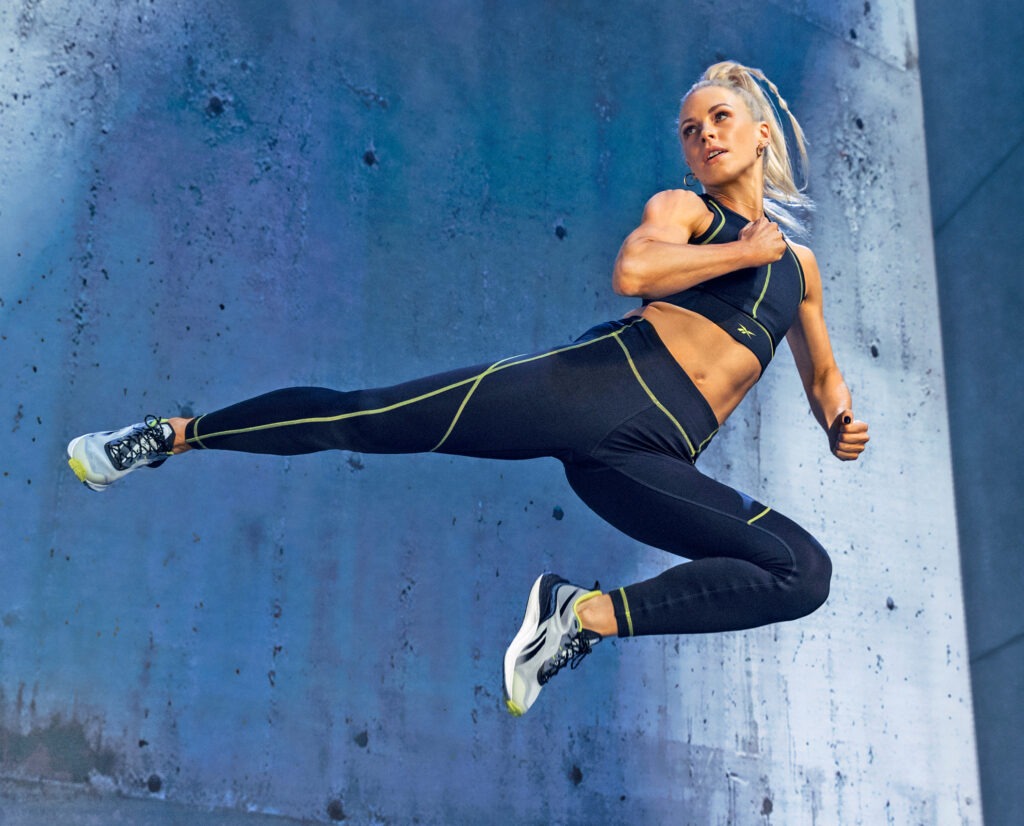
Connected fitness
After the rapid digitalisation of fitness during lockdown, it will come as no surprise that omnichannel fitness – a blend of in-gym and digital home workouts – is tipped to gain traction as we emerge from the pandemic: 59 per cent of exercisers say they now favour a 60:40 split between gym and home workouts.
Far from being simple stop-gaps to tide the industry over during the COVID pandemic, livestream and on-demand have become vital additions to clubs’ long-term digital offerings, with 80 per cent of members planning to continue using them post-pandemic.
“Class attendance has reached 119 per cent of pre-COVID levels in markets where capacity restrictions have lifted”
Live fitness experiences may remain the pinnacle – 62 per cent still do more than half their workouts at the gym – but the digital fitness boom and the growth of home-working mean today’s fitness consumers demand a connected fitness experience that offers convenience and enables them to maintain a more active lifestyle. The evidence? A whopping 84 per cent of gym members also work out at home, and digital fitness users exercise 22 per cent more frequently than live-only exercisers.
Seamlessly linking live and digital will be key to clubs’ success moving forward.
Quality as a USP
In a world of endless quantity – especially online, with the likes of YouTube chock-full of free-to-use, often pretty average fitness content – it’s never been more vital to focus on quality. Operators need to provide world-class content, both in and out of club, to keep members engaged and willing to pay.
With this in mind, it’s important to understand member preferences, and Les Mills found 86 per cent of group exercisers prefer branded classes. Meanwhile 62 per cent say the quality of the music, instructors, equipment and choreography are key to deciding which classes they attend.
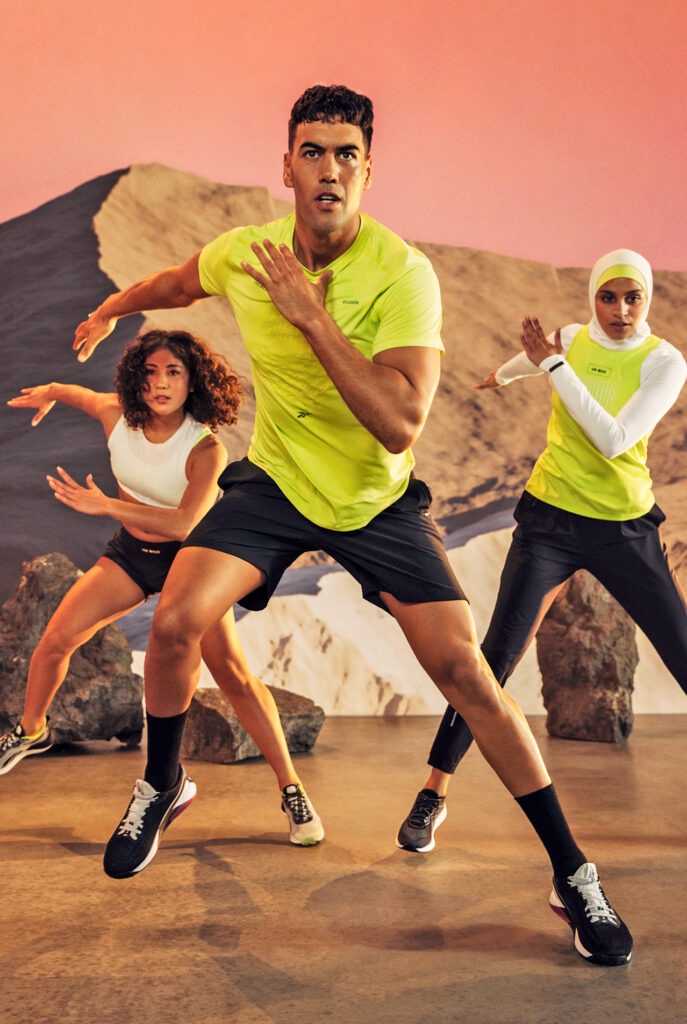
Also note that 58 per cent of members say they would likely cancel their membership if their gym took away their favourite class.
Workplace wellness
Employers are increasingly coming to recognise the benefits of an active workforce – and their responsibility to support this – while employees are gravitating towards companies that care. This creates lucrative opportunities for omnichannel fitness providers to proffer their services and reach new audiences.
For clubs, the ability to demonstrate the scientifically proven impact of their workouts will be key to winning in the workplace wellness market, where ROI carries great weight among decision-makers.
Download your complimentary copy of the Les Mills 2021 Global Fitness Report here.
Alejandro Ramos
What inspired you to create Síclo?
Our original inspiration came out of New York. My Síclo co-founder Pedro de Garay used to live in NYC, where he did classes at the SoulCycle studio in the basement of his apartment block. He fell in love with the concept: the music, the cool vibe, the space crowded with smiles.
At the time, I was working in venture capital and was very interested in the entrepreneurial space in Mexico. Pedro was by now considering a studio launch in Mexico, so he suggested I fly to New York to try out a class. I’d always been into outdoor rather than indoor sports, but I was sold and ready to sign on the dotted line by the second track of the class.
We approached SoulCycle to see if they’d be interested in launching in Mexico with us, but they had such strong growth plans for the US that Mexico wasn’t on their radar yet.
“We believe people should enjoy life, and we include fitness and wellness within that: it shouldn’t be a chore but something you enjoy.”
So, we set out to do something different. Something with its own strong identity and personality – its own way of connecting with the Spanish-speaking market – so if SoulCycle were ever to come to Mexico, that would be OK. Our brand would be sufficiently strong and differentiated that we would be able to co-exist.
We hired a really cool branding agency who helped us come up with the Síclo name and design concept. We went out on the road, doing maybe 90 classes until we found our perfect master instructor, Jeremy, and we worked hard on our methodology to ensure we’d be delivering best-in-class programming and instruction. We developed a brand language that people would instantly connect with, giving it a local touch by drawing in phrases from Mexican songs, for example. And we built a cool website that would allow people to quickly get to know Síclo and what it stood for.
And what does Síclo stand for?
We believe people should enjoy life, and we include fitness and wellness within that: it shouldn’t be a chore but something you enjoy. Yes, you’ll need to put in the effort if you want to be the best you can be – and we do challenge people to set a high bar for themselves – but you should absolutely enjoy the process.
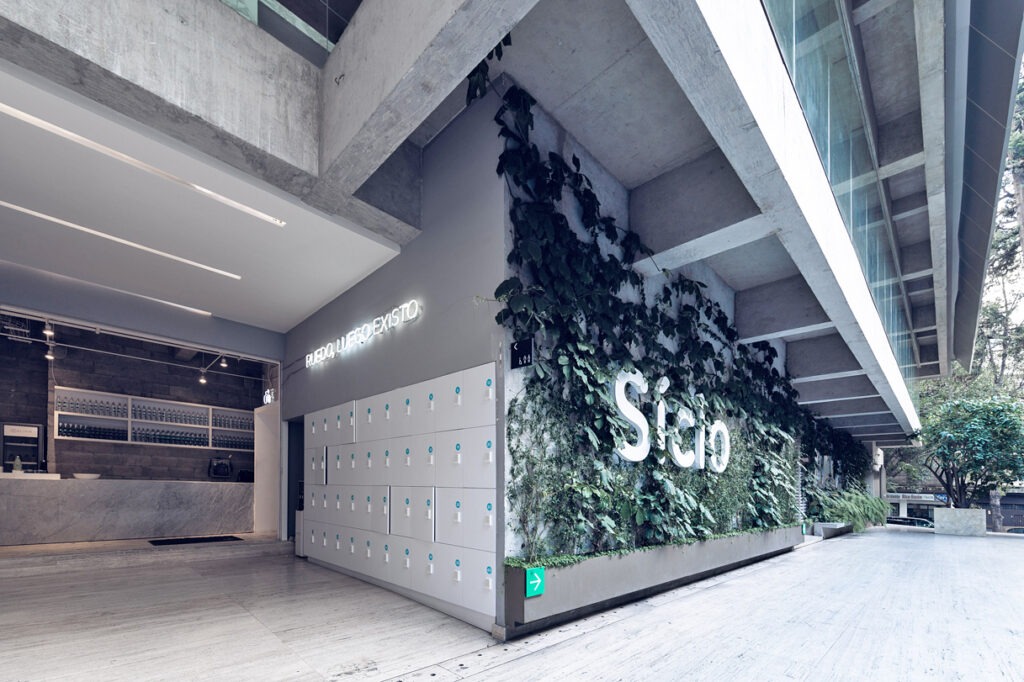
When and where did Síclo launch?
We went big on our first site, because we wanted to start really strongly. We didn’t just want to do a small pilot. We bet aggressively on an amazing location – a huge space in the Santa Fe neighbourhood of Mexico City, where there’s a great mix of residential, business and top universities. We created a visually spectacular space. And we launched on 29 June 2015 with an incredible new brand for the Mexican market.
It was such a huge location that we could easily have added studios for other disciplines, for example, or a café. However, we wanted to focus on one thing – rhythm cycling – and be the best at it. It was definitely the right strategy.
That first site won an architecture and design award in New York and remains our flagship, with its huge open space, 10m high ceilings and two cycling studios offering 110–120 classes a week.
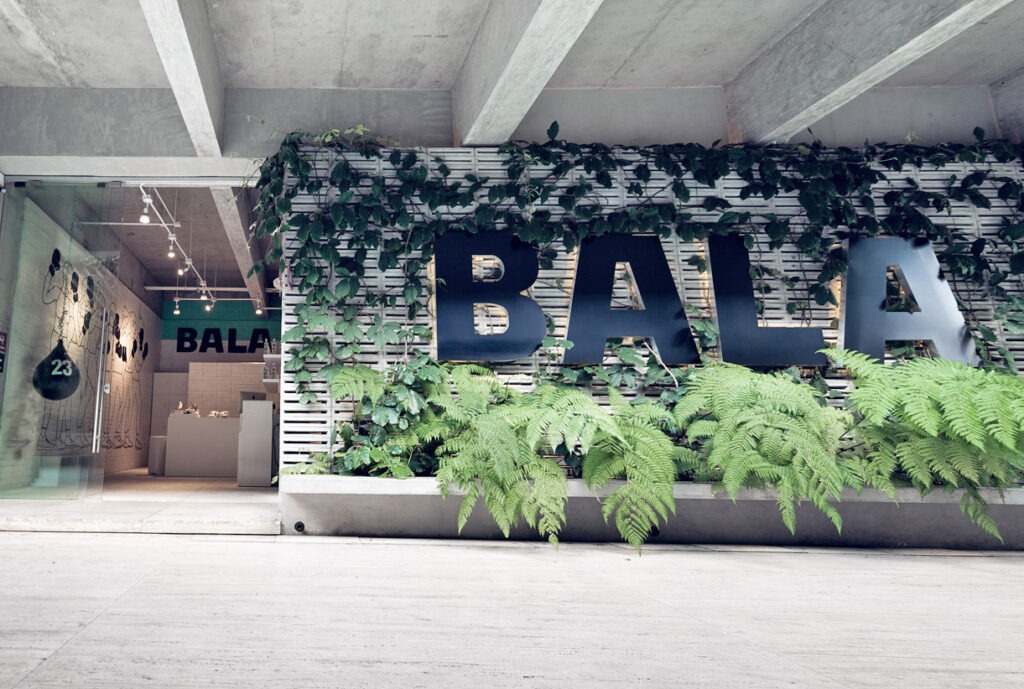
“People laughed at us when we said we were going to charge US$15 a class, but the studios were full within a couple of weeks of opening”
What was the market like in 2015?
When we launched Síclo, there was no boutique market in Mexico; Mexico is always lagging behind the US. But of course, that meant there was an opportunity for us, because we already saw boutique as the future of fitness.
People laughed at us when we said we were going to charge 300 pesos – about US$15 – per class. But we quickly proved that people were absolutely willing to pay for the experience, the space, the instructors, the quality of the brand. The studios were full within a couple of weeks of opening.
Fast-forward to today and it’s now a highly competitive market: our first competitor launched about six months after we unveiled our first site, and many more have launched since.

So, what are your USPs?
We’re lucky enough to be leading the boutique space here, and we’ve done a lot of work to ensure we maintain that strong position. We’ve paid a lot of attention to every facet of our brand from the outset.
We have really good locations, with most of our studios designed by Pedro’s brother, who’s an incredible, award-winning architect.
We have a vibe that people really connect with, led by our instructors who are not only amazing performers but also community-builders: we’re very selective in who we recruit, with around 80 instructors carefully chosen from thousands of applicants.
And as I mentioned before, we have a fantastic master instructor in Jeremy, who’s one of the most passionate perfectionists I’ve ever met. He’ll get to the studio well before every one of his classes and quietly sit out of the way, headphones on, getting himself in the zone for the performance he’s about to deliver. He’s exceptional and inspirational to our other instructors, most of whom he’s trained. He also creates the programming framework into which our instructors can inject their own personalities, language, music, vibe and way of connecting.
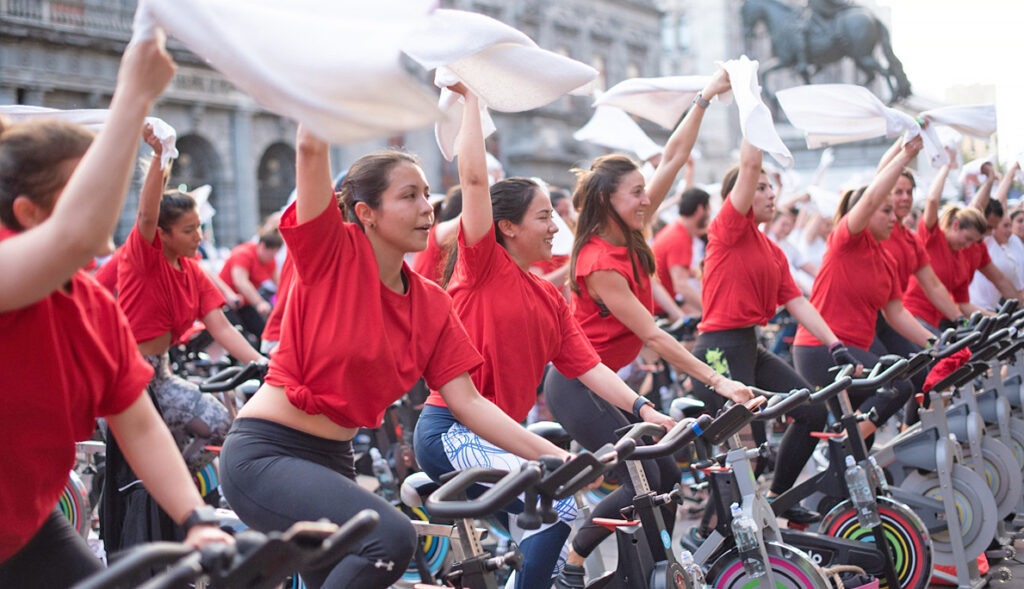
Our studios typically each offer around 45 classes a week, on top of which we also run large events: collaborations with Apple Music, for example, where it brings cool DJs and artists and we put a couple of our instructors on-stage to lead huge classes that look and feel like concerts. We also hold charity Síclotons and special fundraising classes; not-for-profit work is an important part of the Síclo DNA.
Quite simply, we’ve taken a huge amount of care over every detail. As a result, our community mostly grows organically through word-of-mouth, and through the fact that the media approaches us rather than vice versa.
“As the years have passed, our ambition has grown. We now have a vision of becoming the largest wellness community in the Spanish-speaking market.”
How has your offering evolved?
Rhythm cycling still accounts for around 70 per cent of our 21 studios in Mexico, and all our studios in Spain and Peru; we have two studios in each of those markets, launched as joint ventures with local partners in 2018 and 2020 respectively. Obviously the latter was a complicated start, as we launched a studio and then had to close it two weeks later for the best part of a year. Happily, now re-open, the studio is packed and we’ve just opened a second location.
However, as the years have passed, our ambition has grown. We now have a vision of becoming the largest wellness community in the Spanish-speaking market.
With that in mind, we’ve expanded to offer more disciplines alongside cycling: barre, yoga, boxing bootcamp, meditation, strength, running, stretching and HIIT Kentro, which is a combination of strength, yoga and cardio.
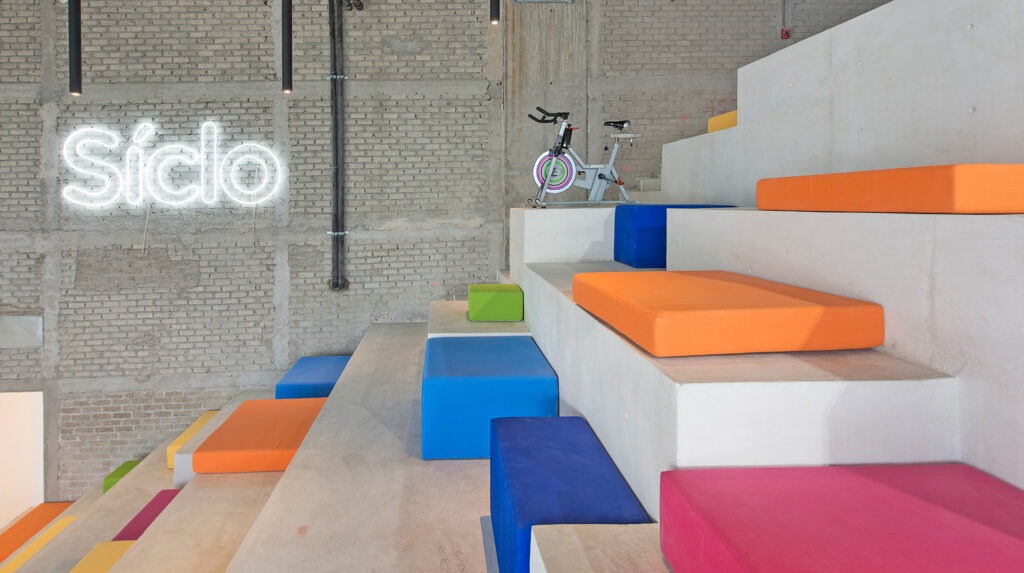
Síclo remains the umbrella brand, but beneath it we now have separate sub-brands: Rueda for our cycling studios, Bala for boxing, and so on. Each location remains single-discipline, although in some neighbourhoods we have multiple locations very close by, so people can take part in different styles of class with us. And actually, there’s one location in Mexico City where we offer Yoga, Barre and Kentro out of a single studio space.
In Spain, we also do regular Barre and Kentro pop-ups. And in Mexico – originally driven out of necessity during COVID, but now about to be launched as a concept we can roll out where appropriate – we also have an outdoor studio concept.
Alongside all of this, we’ve created a digital offering of live streamed and on-demand classes, which of course allows us to reach areas where we don’t have any studios. Of our nine disciplines, there are some that only exist separately on our digital platform: stretching, for example, and strength. In-person, these are incorporated as part of our classes: strength sections in cycling, weights as part of our boxing bootcamps, and stretching at the end of every workout.
How important is digital to your vision?
We have a strong digital offering now, with a combination of hardware – our biSí bike with its integrated, 180-degree rotating screen – and software, with Síclo content delivered via the biSí screen and via our Síclo+ app.
“As we grow, we’ll tweak as needed to make the product feel local, so people immediately connect with it.”
However, although digital came to the forefront in lockdown, we see omnichannel as the future of our business, with physical and digital equally important moving forward.
Digital absolutely won’t replace physical studios. Many of our community already do both at-home and in-person classes, and we’re going to be launching new packages soon offering biSí customers special privileges and discounts in our studios.
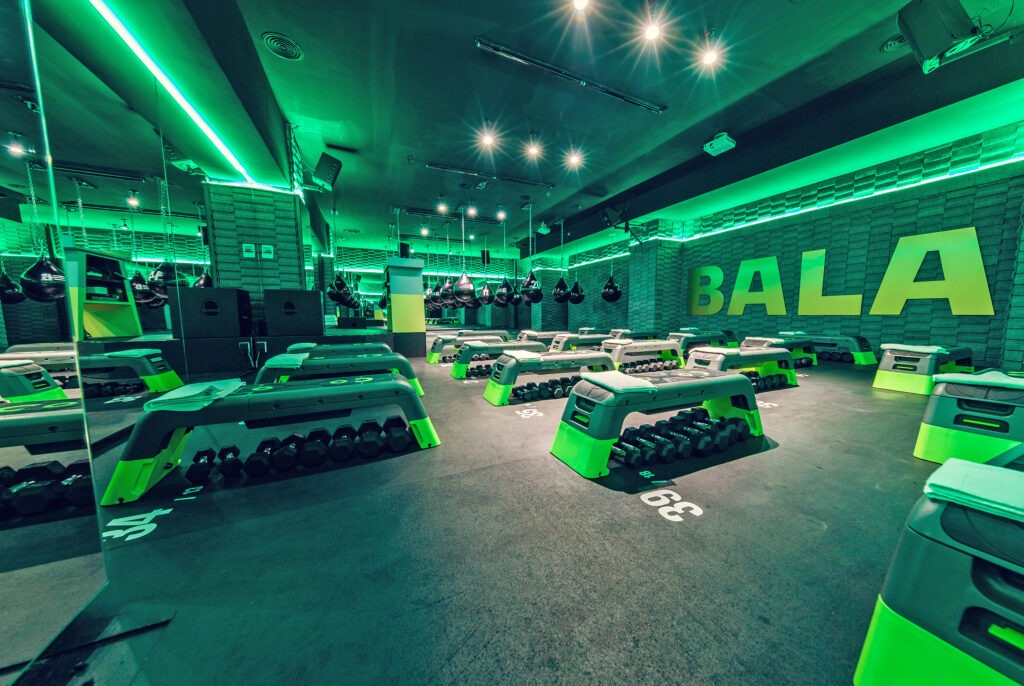
What digital is great at – aside from supplementing studio visits with at-home classes when that’s more convenient – is allowing us to reach into new markets with minimal effort to see what traction we get.
Most of our digital users are currently based in Mexico, Spain and Peru – where we have physical studios and good brand awareness – but we’ve actually gained users in 80 countries and over 2,000 cities, including important communities in Colombia, Chile, the US and Portugal.
That’s the power of omnichannel. You get great data from your digital platform that helps you decide where to open physical studios next. Those studios then act as showrooms, building awareness and letting people get to know you. You start to grow your community locally, then you launch bike deliveries to that market alongside your studios. That’s the Síclo cycle. That’s what we’re aiming for.
“We may explore Spanish-speaking markets in the US – possibly the world’s most competitive market, but we believe our uniquely Latin vibe gives us a great opportunity.”
Tell us more about biSí and Síclo+
Our biSí bike costs just under US$2,000 – or US$50 a month if you pay in instalments – with the option to add up to six profiles so each family member can access their workout history, personalised recommendations and so on. You then pay around US$36 a month for the Síclo+ content, which streams to the integrated screen on the bike or to your app if you’re exercising elsewhere.
Through our bike, you can interact with the instructor during live streams, as well as with other riders. It’s all about building a sense of community connection, which is an agenda we’re going to be pushing even harder moving forward. We want to create, and connect, the largest wellness community in the Spanish-speaking market.
If you don’t have our bike, you can still be a Síclo+ app customer, but in that case we actually charge you less: around US$14 a month. We don’t believe the experience is as good when you can’t connect, interact or access the metrics you get from biSí.
We do eight live streams a day, spanning all our disciplines, which then make their way into our content library for on-demand use.
What are your growth plans?
We’re already in three cities in Mexico – Mexico City, Monterrey and Guadalajara – as well as Madrid in Spain and Lima in Peru. Our next targets are Barcelona in Spain, plus some South American markets – Colombia and Chile are top of the list – where we already have strong digital populations.
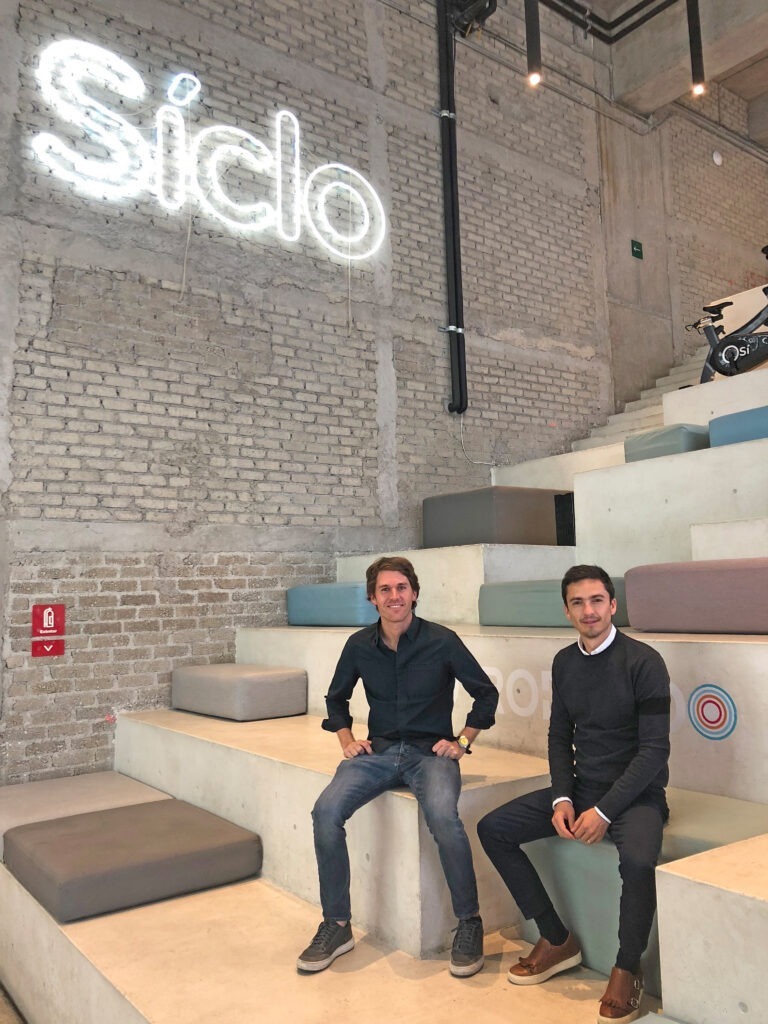
We may also explore Spanish-speaking markets in the US: Los Angeles, Miami, San Diego, even Chicago and New York. Of course, that would take us into possibly the world’s most competitive market. However, we believe our uniquely Latin vibe gives us a great opportunity to create important communities in these locations.
As we grow, we’ll just need to ensure – as we have in Mexico, with the references from popular songs woven into our language – that we tweak as needed to make the product feel local, so people immediately connect with it.
The making of a rockstar
Glen Ostergaard
Les Mills programme director – SPRINT, RPM, BODYPUMP
When you’re talking about rockstar instructors, it’s important not to be too elitist. As our Les Mills training system proves, by focusing on the key pillars of great instruction – technique, choreography, coaching, communication and performance – it’s possible to teach someone to become a world-class instructor.
There is a deeper layer, whereby you know who’s going to be a real rockstar even before they train as an instructor. They just have the X factor, and it tends to come down to soft skills. However, for me the secret is to dive deep into each individual to work out what their superpower is – because everybody has one, and sometimes more than one.
“The faster you identify your superpower and focus on what you’re really good at, the faster you’ll become a rockstar”
You may find your superpower immediately, for others it takes longer, but it’s all about understanding your personality type. Why do you want to be on stage? What is it about you that will draw others to you?
Some people are natural connectors, communicators and community-builders. Others are performers who really connect to the music. There are some whose natural athleticism draws people to them. And then others are natural motivators who can make people really push themselves in class. Over the years, I’ve found these to be the broad areas of superpower: communication and connection, performance, inspiration, and athleticism.
Once you find your superpower, play to that strength: you should always teach from your strongest point. Don’t feel you have to copy others. Work out what you can do better than others, dial that up on-stage, be authentic to who you are and the rest won’t matter so much. People will be drawn to you when you dial up your superpower.
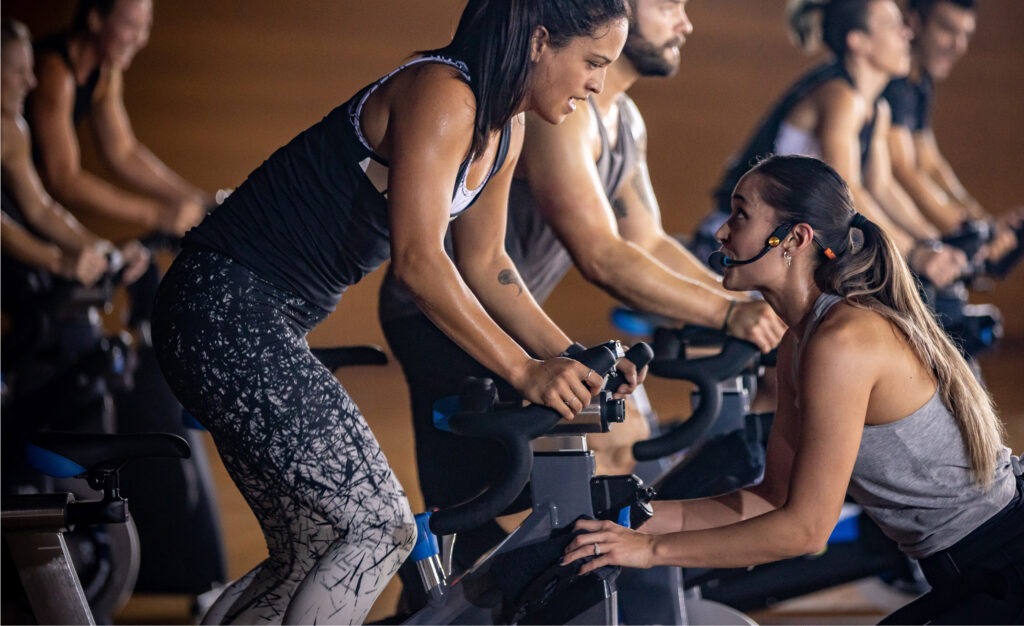
That said, you can’t totally neglect your areas of weakness: you’ll need to be able to bring elements of coaching, connection and motivation into any class. But it is OK to accept that you don’t have to be equally strong in every area. Me personally? I’ve never been great at connection, however hard I work at it, but my superpower is motivation. Know what you’re really great at and have it in your back pocket at all times, ready to pull out whenever you need it.
You may find your superpower influences the classes you choose to instruct, too. I’m programme director for SPRINT, RPM and BODYPUMP, and I’d say SPRINT plays to the strengths of athletes and motivators. For RPM, performance comes to the fore. And then flipping into the digital world, it’s more about coaching, inspiring and motivating; connectors may find it harder to play to their strengths via a screen.
In general, though, the faster you identify your superpower and focus on what you’re really good at, the faster you’ll become a rockstar.
Noël Nocciolo
Cycle master trainer, boutique thought leader, consultant
Hear from Noël on how superstar instructors…
- Are authentically themselves on-stage, but in a heightened way
- Are enter-trainers, marrying experience and training needs in every event
- Can absolutely be taught, with superstardom something that can be nurtured and trained
Renata Jarz
House of Workouts CEO, presenter, speaker, GX consultant
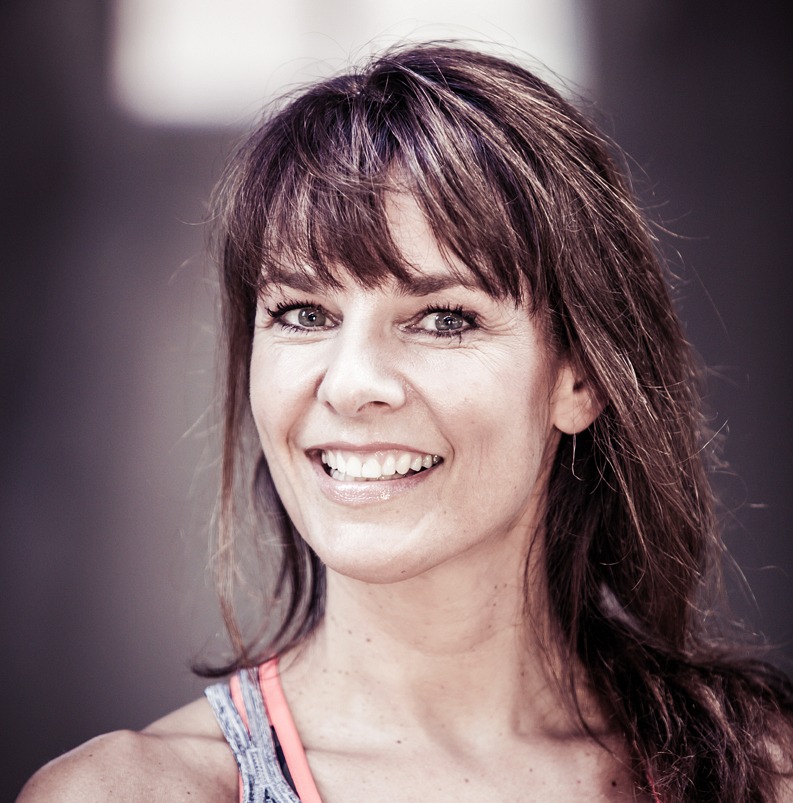
Even those with the greatest charisma still need the basics in place: being fit themselves, good technically, preparing their choreography well and so on. Superstars can’t rely purely on their X-factor to carry them through. It’s like baking a cake: you can’t put all the icing on top if the cake itself isn’t baked properly. Discipline is key.
Empathy is also hugely important, as it underpins genuine connection. Too many instructors want to shine on-stage, whereas the best instructors are motivated by making the people in their classes happy and healthy. They really get to know their participants. They teach as the participants want to be taught, not as they would want to be taught. They get on participants’ level and pitch the class perfectly to those in the room, and to how those in the room feel on any given day. They make every participant feel special and seen.
They use words that activate participants’ right brains, rather than just technical words that activate their left brains, focusing on happiness and feeling good to stimulate endorphins, dopamine and serotonin, ensuring people come out of class on a high.
“Too many instructors want to shine on-stage; the best are motivated by making those in their classes happy and healthy”
They aim to surprise participants every time, making each workout feel different – even if it’s a class they’ve taught before. Every class is scripted, and scripted differently if it’s a re-run, putting the accent somewhere new to avoid falling into the same-old teaching patterns. This inspires participants and helps the instructor stay fresh. I also recommend teaching no more than 14 classes a week, so it remains a pleasure and not just a routine.
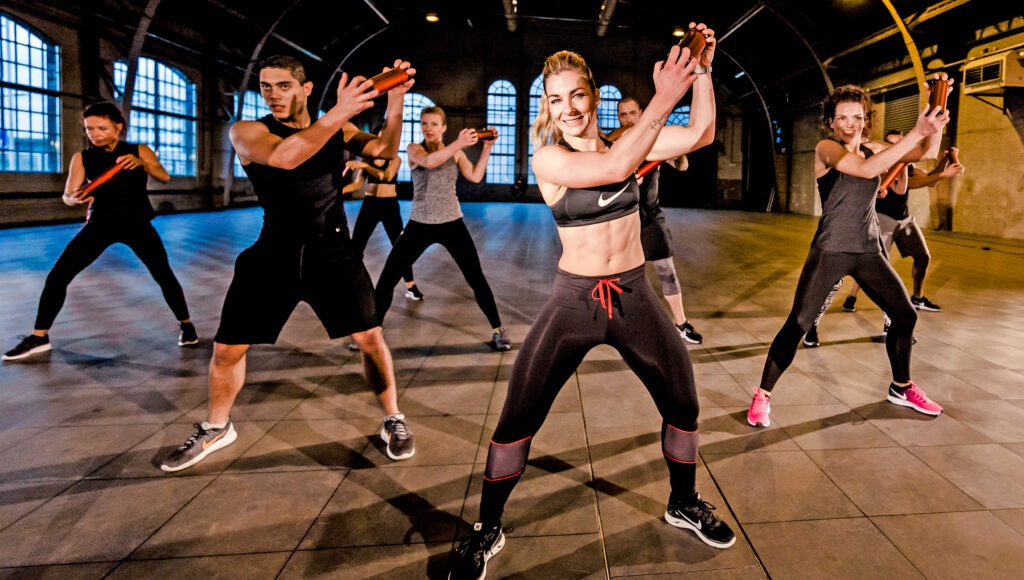
But even then, with all these boxes ticked, there is an X-factor that marks true superstars apart, and this is even truer for digital superstars than for live superstars. For digital channels, where you can’t fall back on in-person interaction, you need that extra twinkle in your eyes, that special smile, that ability to ‘make love’ to the camera.
I’ve been in the room while classes are filmed and felt a real ‘wow’ factor during the live performance, but then seen it played back on-screen and not felt the same. It can happen the other way round, too – great on-screen, live not so good – although generally I find digital superstars are more likely to also be great in-person than vice versa.
It’s also the case that superstardom doesn’t necessarily cross disciplines. You can be great on a bike but terrible in another class format. Your natural style of movement has to fit the programme if you want to be a real superstar.
Sue Wilkie
Head of instructor support, EMD UK
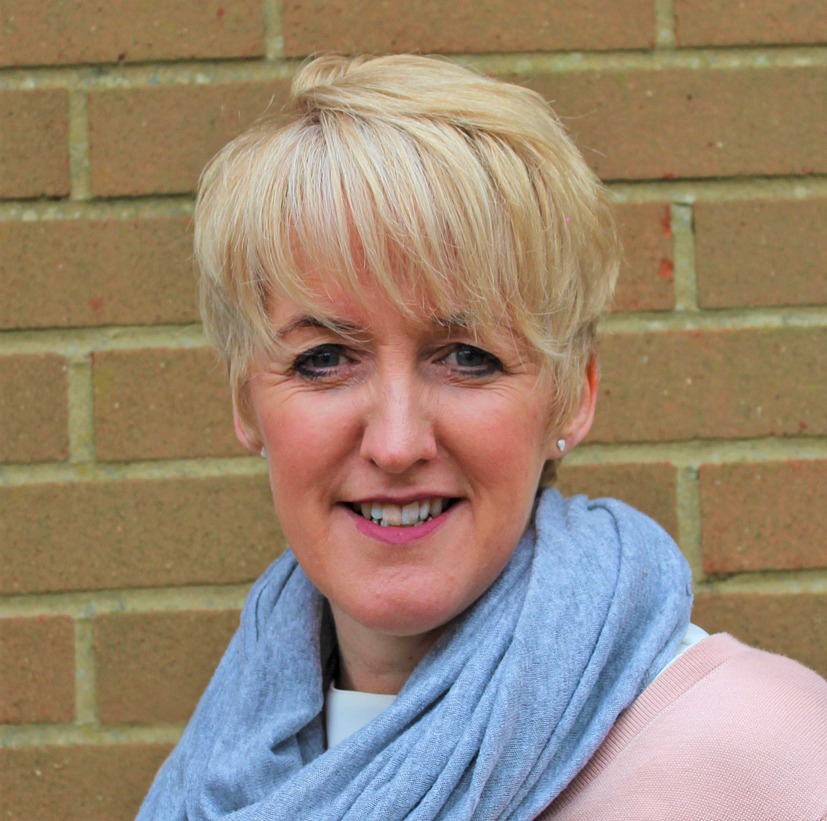
What makes you stand out in a crowd? There will be numerous instructors in your area, many teaching exactly the same release as you. Some might have taught for longer than you, too. They might be more qualified. So why does someone choose to come to your class specifically?
Quite simply, it’s YOU. It’s your innate ability to connect and communicate with participants, building a rapport that makes them want to come back – something I don’t believe can be taught.
It’s your true love for what you do that shines through whenever you teach. Your vibe attracts your tribe; that’s true wherever you teach, whatever type of class you teach.
It’s also about preparation. Being a superstar is a hard role to keep on top of – charisma alone doesn’t guarantee it – so it’s the hours you put in behind the scenes to keep the choreography fresh and the session plans relevant, all while trying to maintain your love of the job.
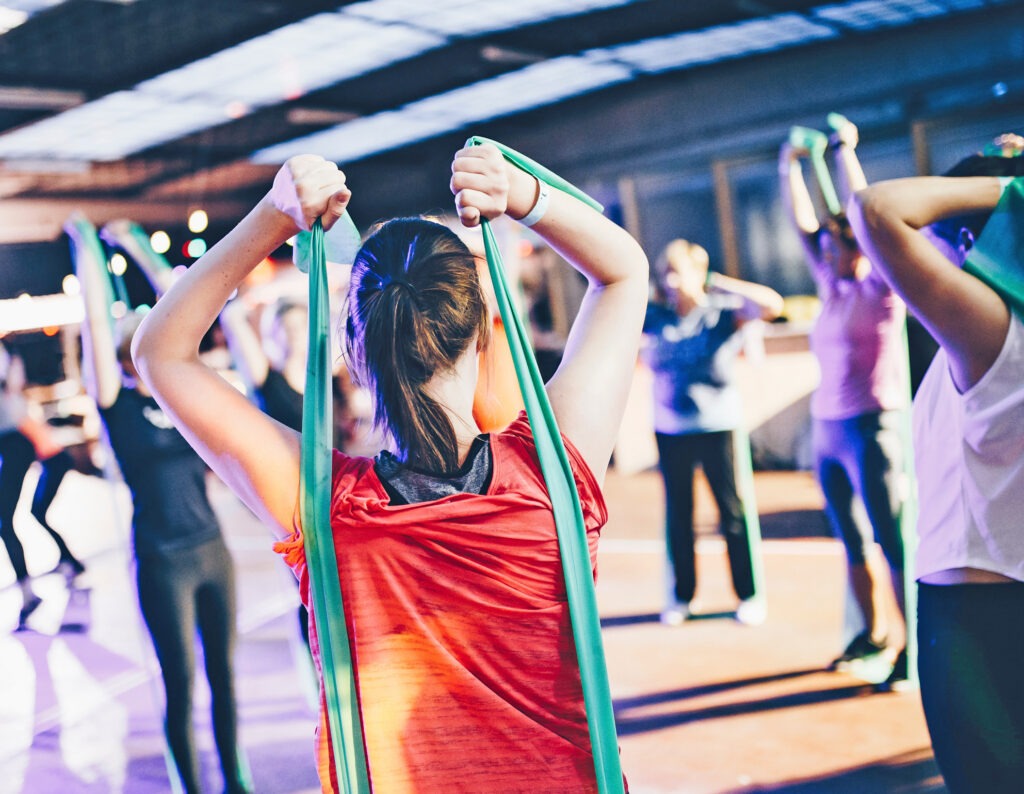
It’s the time invested in recording your delivery of a class, then watching back and evaluating yourself on the three key areas of teaching: Instruct, Coach, Motivate.
It’s the time you take to really know your content and choreography, so you make it look effortless on the day. I’ve spent many hours listening to tracks in the car so I knew every change in tempo, every block, every chorus by heart before putting the choreography to it. You make sure everything flows so you enjoy teaching it, because that shines through and inspires your participants.
“There will be some who just don’t click with you in class. Know not to take this personally. You are who you are. Embrace your uniqueness.”
And of course, it’s about building a community. As a superstar, you teach to the entire class, not just those at the front, so everyone feels welcome and valued. You make time to chat with participants before and after class, too, so they feel part of the community. And you use the insights from those chats – understanding what music or track your community likes out of the latest release, for example, or what goals they have – to make your class experience even better.
And finally, you’re happy to be yourself. Not everyone has the same abilities or attributes, and there will be some who just don’t click with you in class. You know not to take this personally. You are who you are and you embrace your uniqueness.
And breathe…
We talk to two operators who’ve invested in the latest technology to ensure their clubs – including their cycle spaces – are filled with air that fills their members with confidence.
The best air you can breathe – GO fit
“When COVID hit in early 2020, GO fit looked at all potential transmission risks and implemented 35 separate protocols – at a cost of around €6m – to ensure our clubs were, and still are, the safest places you could be,” says professor Alfonso Jimenez, chief research & innovation officer at the GO fit LAB.
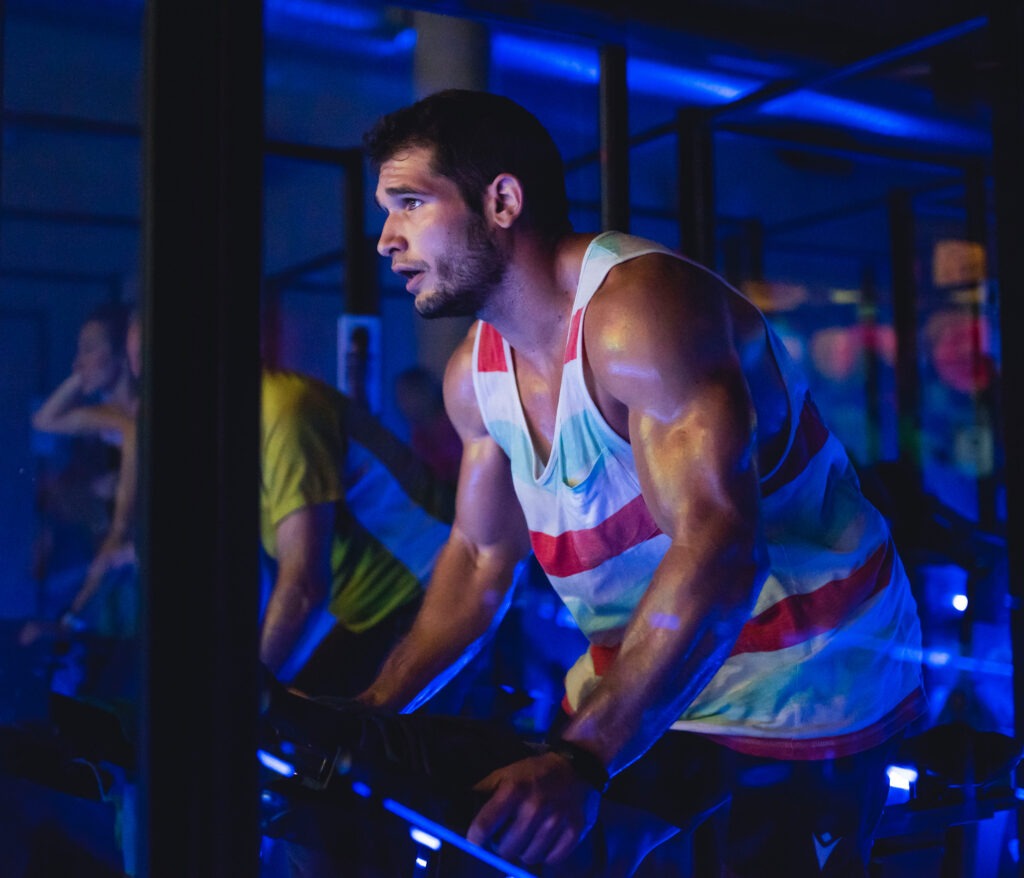
“As a result, from 15 million visits over 16 months, there was not a single outbreak in any of our clubs. When – in February 2021, in a city where 10 per cent of the population is a member of our club – there was an accumulation of potential COVID cases coming into the club, our contact mapping allowed us to track the transmission rate. It was just 0.28 per cent, compared to an average 5 per cent transmission rate locally. Our robust protocols really do ensure you’re safer in our clubs than anywhere else.”
He continues: “A number of our protocols relate to air quality. In fact, we’re pretty much obsessed with it! We’ve implemented real-time monitoring of air quality in every single area of our clubs, with sensors measuring CO2 concentration: higher CO2 levels mean higher levels of un-renewed air, which is more likely to contain the COVID pathogen.
“In our cycling studios, the air is replaced 22.8 times an hour – just over once every two-and-a-half minutes”
“These sensors are connected to a powerful ventilation system that’s triggered to totally renew the air in the club on average every seven minutes. In some areas – our cycling studios, for example, where members are exerting themselves and breathing heavier – the air is replaced 22.8 times an hour, which is just over once every two-and-a-half minutes.
“There’s an important metric – Clean Air Delivery Rate (CADR) – which indicates how many cubic metres of clean air you’re pumping in every hour. The recommended minimum CADR for crowded areas is 750, as this reduces the risk of transmission from 100 per cent to 10 per cent – that is, if you’re in a crowded space for an hour with someone who has COVID, and the CADR of the room is 750, your risk of contracting COVID drops to 10 per cent.
“In our cycling studios, the CADR is 14,400, which far exceeds any regulations. But these are spaces where members are working and breathing hard, so we want to ensure the air is intensively and rapidly recycled.
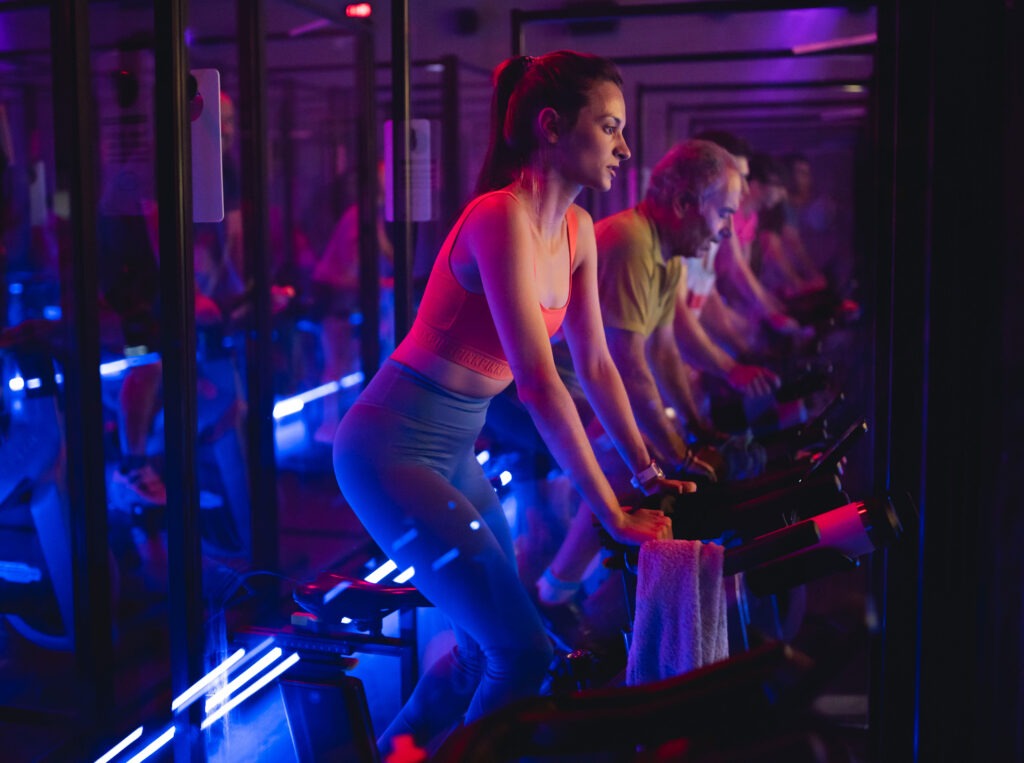
“We also filter it. We’ve installed HEPA filters throughout our clubs, which identify and filter out any pathogen particles in the air. They get rid of everything, including COVID-19, and take our air to operating theatre grade.
“We’re constantly reviewing the latest research, and as more and more evidence emerges that COVID is transmitted through the air rather than via surfaces, air quality will continue to be a huge focus for us. The system we’ve put in place will be permanent – air quality will forever be this high at GO Fit – and we’ve made a big educational push to ensure members understand the continued importance of mask-wearing and social distancing.
“Perspex boxes around each individual bike allow members to take off their masks during class, which otherwise still isn’t permitted”
“And then in our cycling studios, we have perspex boxes around each individual bike, so exhaled air is sucked up and out by our ventilation system. This allows members to take their masks off during class, which otherwise still isn’t permitted in Spain. We then nebulise all bikes and screens between classes.
“Finally, as you come in the front door of the club, there’s a big screen comparing the quality of the air inside the club to the quality of the air outside, which is public information. Consistently, our air is of a far superior quality to the air outside, and as a result, member confidence is really high.”
Cleans the air, and everything it touches – Midtown Athletic Clubs
When Midtown Athletic Clubs re-opened its eight large clubs from lockdown, alongside all the social distancing, mask wearing and enhanced cleaning protocols was an unobtrusive but powerful new system: airPHX air sanitation.
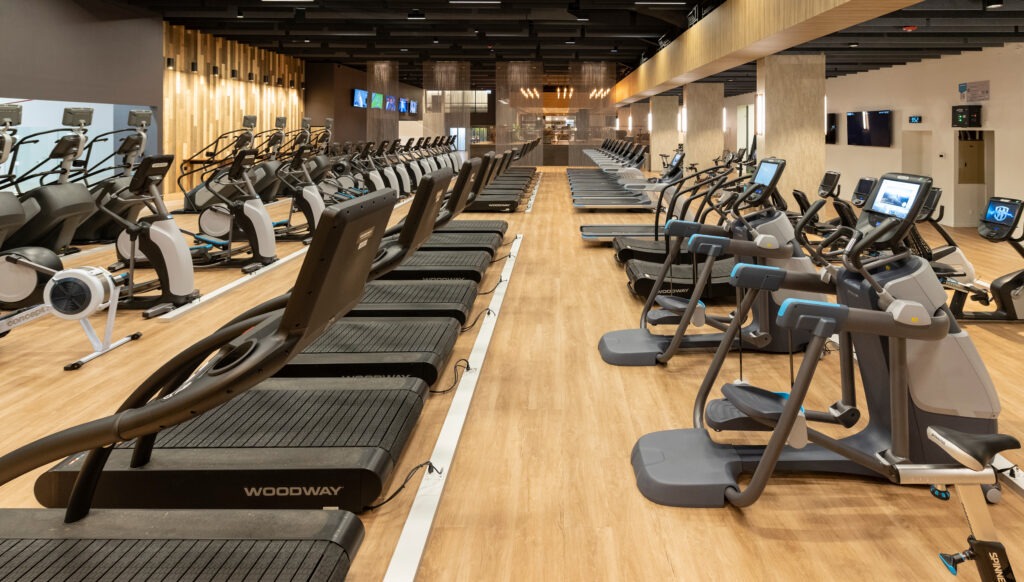
Widely used in medical facilities as a safe and highly effective solution, airPHX is an ICU-grade air sanitation system that kills airborne bacteria, viruses – including coronaviruses, influenza and norovirus – and other pathogens, continuously reducing these by up to 98.2 per cent as well as sanitising every surface the air touches.
“When we were first closed down, one of our initial tasks was to investigate ways to clean and sanitise our clubs that would be considered over and above what had previously been acceptable,” says Midtown president Jon Brady. “We wanted to do everything possible to keep our members and associates safe when they returned, and hopefully avoid future shutdowns.”
“We distilled the messaging and came up with a simple statement: airPHX completely sanitizes the air, and everything the air touches”
A comprehensive new ‘standard of clean’ was developed, including the installation of airPHX units throughout all Midtown clubs – including in each and every group exercise studio – at a cost of US$250,000.
“We then needed to express all of this in a simple, powerful way to build confidence among our members and teams,” says Midtown’s creative director Eric Lowery. “We came up with what we call our 4S approach, highlighting the fact that our cleaning technology is ‘Strong, Safe, Sustainable and powered by Science’.
“Explaining airPHX was a tough challenge, though. The science behind the units is quite complicated and we needed to present the information to our members in a quickly digestible way.
“We distilled the messaging and came up with a simple statement: ‘airPHX completely sanitizes the air, and everything the air touches.’
“In some cases, we also mentioned the fact that airPHX completely disinfects the club every night.
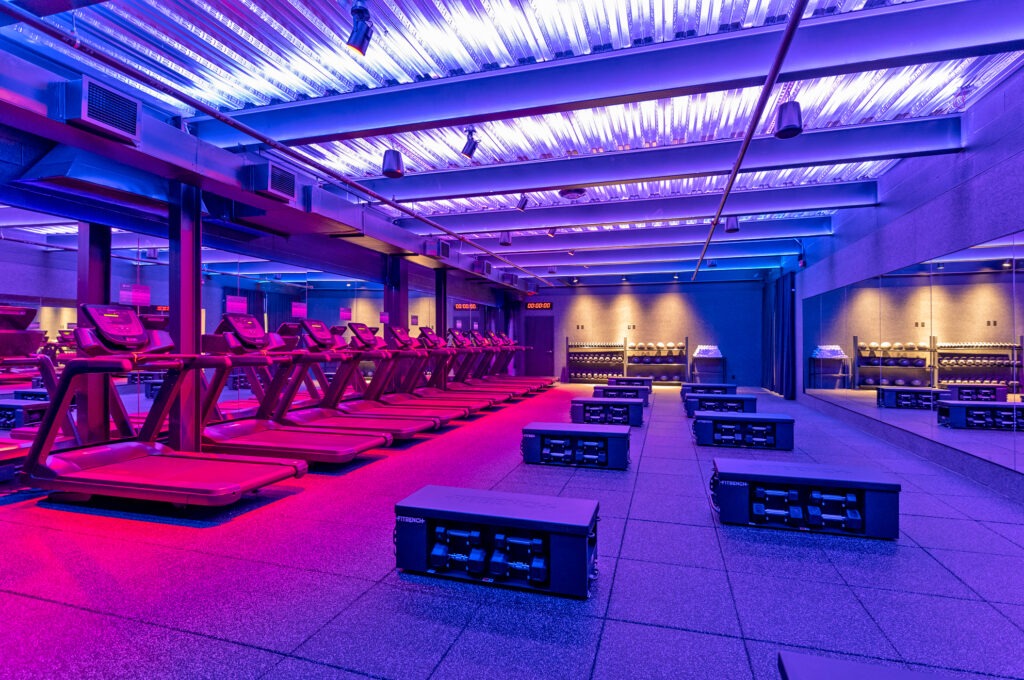
“We did a lot of communication around this to build confidence: welcome back videos, for example, and a dedicated midtown.com/clean web page. And interestingly, it wasn’t just existing members who responded positively: airPHX also turned out to be a great prospecting tool in the aftermath of lockdown.”
Lowery continues: “We also produced an airPHX infographic that goes into a bit more detail, running through a few FAQs and sharing some statistics and context around just how effective these units really are: the fact that airPHX continuously kills over 95 per cent of germs, including coronaviruses, and 99.99 per cent in an overnight deep clean while the club is empty; that each unit sanitises 150,000 cubic feet of air – the space taken up by 156 school buses; and that it’s totally safe.”
“airPHX really seems to have captured the imagination: we’ve seen so many photos on members’ social pages with the caption ‘Does your gym do this?’”
Brady adds: “This poster is displayed next to every airPHX unit in our clubs, and returning members were so fascinated by the hi-tech approach that our teams were bombarded with questions. We therefore also produced an FAQ sheet, explaining the technology and sharing the proven independent results, which our reception teams could give to any members who wanted to know more.”
Brady concludes: “Member feedback has been overwhelmingly positive around all our enhanced standards, and airPHX really seems to have captured the imagination: we’ve seen so many photos of the airPHX machines on members’ social pages with the caption ‘Does your gym do this?’
“It’s important that members continue to feel safe in our clubs, too. With COVID sadly now a part of our lives, airPHX will also be a permanent fixture at Midtown.”
Go the extra mile
Indoor cycling. It’s a great workout with fantastic cardiovascular and metabolic benefits, and all with low impact on the joints. But it also puts our body into quite an unnatural position: hunched, forward-flexed, doing a repetitive movement.
Sarah Ramsden, owner of Sports Yoga, explains: “Repetitive sessions on the bike can shorten your hip flexors, quads, hamstrings, calves, groins and ITB; stiffen your ankles; and cause chronic over-lengthening and weakening of the lower and upper back.
“Mostly this shows up as back, knee, neck and wrist pain – but crucially, all that shortening of muscles also makes you less comfortable, less efficient and less powerful on the bike.”
Fortunately, there is an answer: yoga and pilates. These complementary disciplines not only reduce pain and risk of injury from extended periods in a cycling position, but can actually improve your performance on the bike.
Our experts share their views, and it makes for interesting reading whether you’re an indoor cycling enthusiast or a club looking to advise cyclists on how best to structure their training plans.
Glenn Withers
Co-founder, APPI
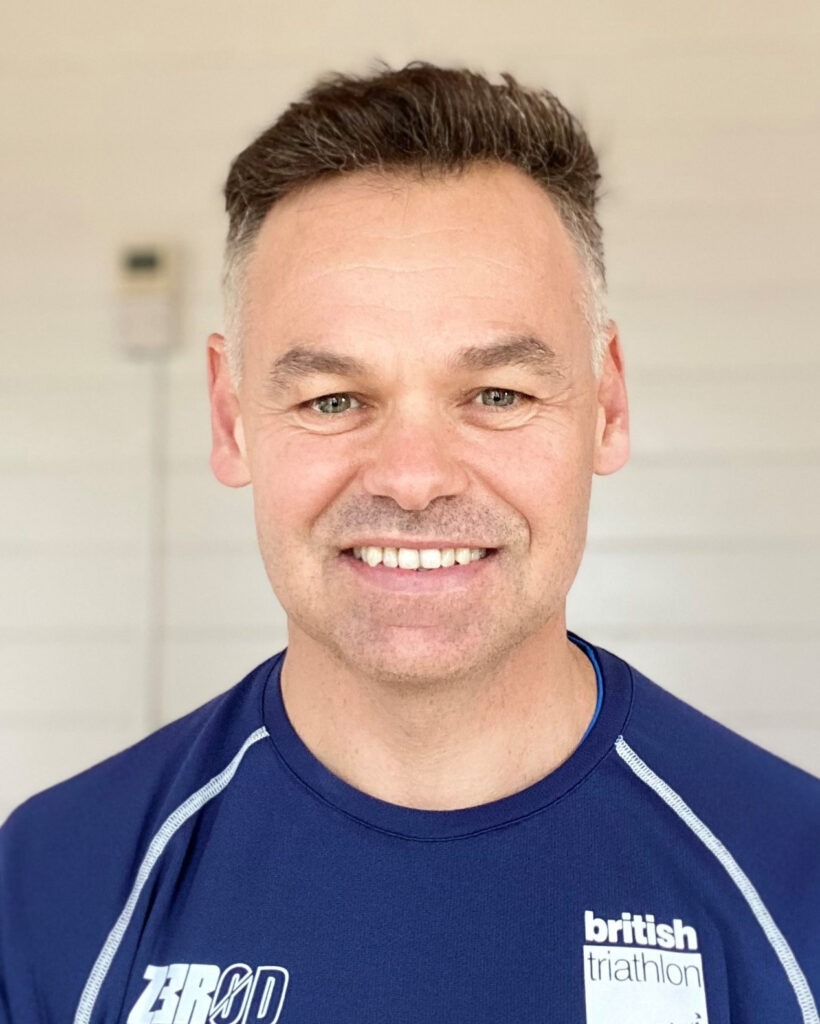
I coach a training course – Pilates for Cyclists – which is actually designed with road cyclists in mind, but which also has relevance for regular indoor cyclists.
The course covers three key areas: endurance, which is more relevant to road cyclists than those doing 50-minute indoor cycling classes; strength, and how pilates can build this in a relevant way to improve cycling performance; and flexibility, looking at how pilates can improve mobility and ease common areas of tightness among cyclists.
The course is designed to help cyclists understand what the posture they adopt on a bike does to the way their body functions – the tightness it causes in the hip flexors, for example, and the tension it can cause in the mid-back if they’re over- or under-reaching – and how pilates can help. It also looks at how specific, at times modified, pilates exercises can strengthen the muscles used in cycling to improve output.
Improved flexibility is a benefit however often you’re in the saddle. Even if you only do one indoor cycling class a week, pilates can help balance out the tightness this can cause, improving mobility and flexibility to increase comfort and efficiency on the bike.
For example, a good pilates for cyclists programme will incorporate some thoracic mobility exercises, because when you’re on the bike, the mid-back is held so stiff that it can cause tension and pain. Similarly, your hip joint never fully extends when you’re on a bike, so you can get very tight at the front of the hip and need to open this up.
“The more core control you have, the more likely you are to get power out of the legs and avoid placing stress elsewhere on the body”
Core strength is also important even at the one-class-a-week level: the more core control you have, the less likely you are to have ill effects from the bike position, and the more likely you are to get power out of the legs and avoid placing stress elsewhere on the body. Even just doing one indoor cycling class a week can cause problems if you have a weak back. By developing core strength, pilates can help you avoid injury.
If you’re doing a class every day, however – or if you’re using indoor cycling classes as part of your road cycling training – then it’s a different story. It’s still about injury prevention, because you’re holding an unnatural cycling position even more regularly, but pilates can also help improve your performance and output.
If you look at which muscles need to work during a pedal cycle, it’s your glutes to start off, with power coming from the back of your hip; then at the bottom it’s your foot, ankle and calf mobility; and to pull back up and over it’s your hamstrings. So, if you want to use pilates to improve your performance, you need a combination of exercises that strengthen the cycling muscles: the core, glutes and hamstrings predominantly.
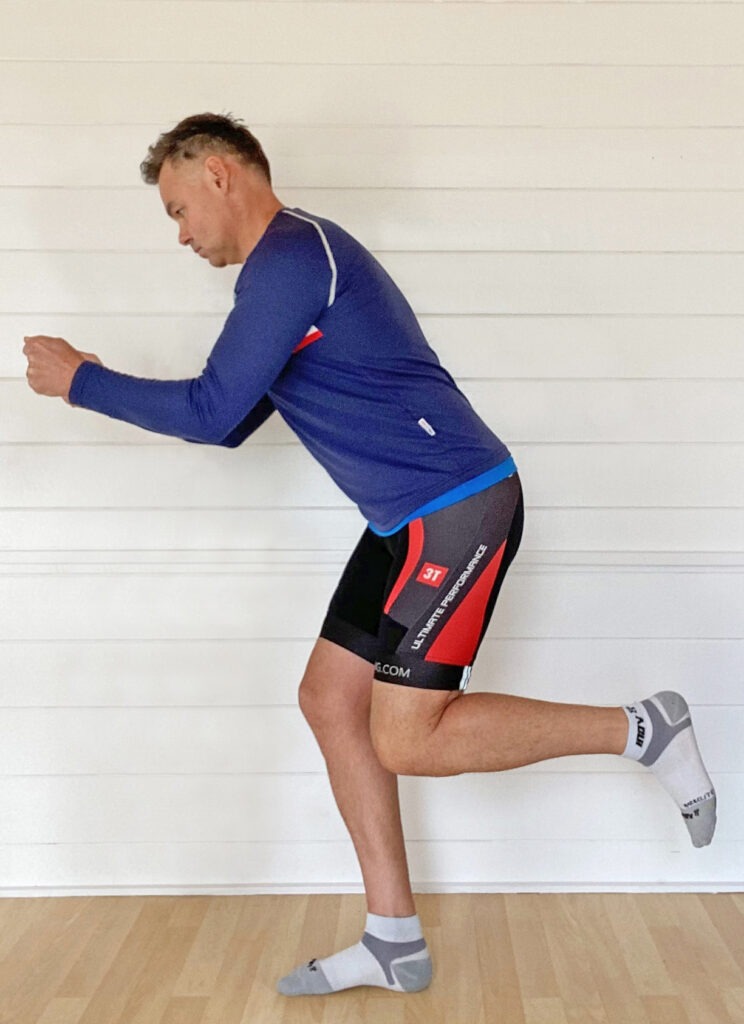
Crucially, you need to train these muscles in the range that they’re required to produce on the bike. That means tailoring pilates exercises to the bike position – training the glutes to produce power from a flexed hip position, for example, and the hamstrings to activate in a bent knee position – so there’s carry-over to improve performance on the bike.
Cycling isn’t just about leg strength, though: you need a strong core to transmit the power into the legs, and to protect the spine so it doesn’t lose efficiency in the way you ride a bike. In fact, research shows there’s a significant decrease in power output through the upper or lower limb with just a 20 per cent decrease in your core strength.
However, if you rely on cycling classes alone to train these muscles – or if, even outside your cycling sessions, you only train them within the range that cycling allows – then tension and tightness will ensue. It’s why a good pilates for cyclists programme will incorporate lengthening and mobility as well as strengthening.
Sarah Ramsden
Owner, Sports Yoga – UK
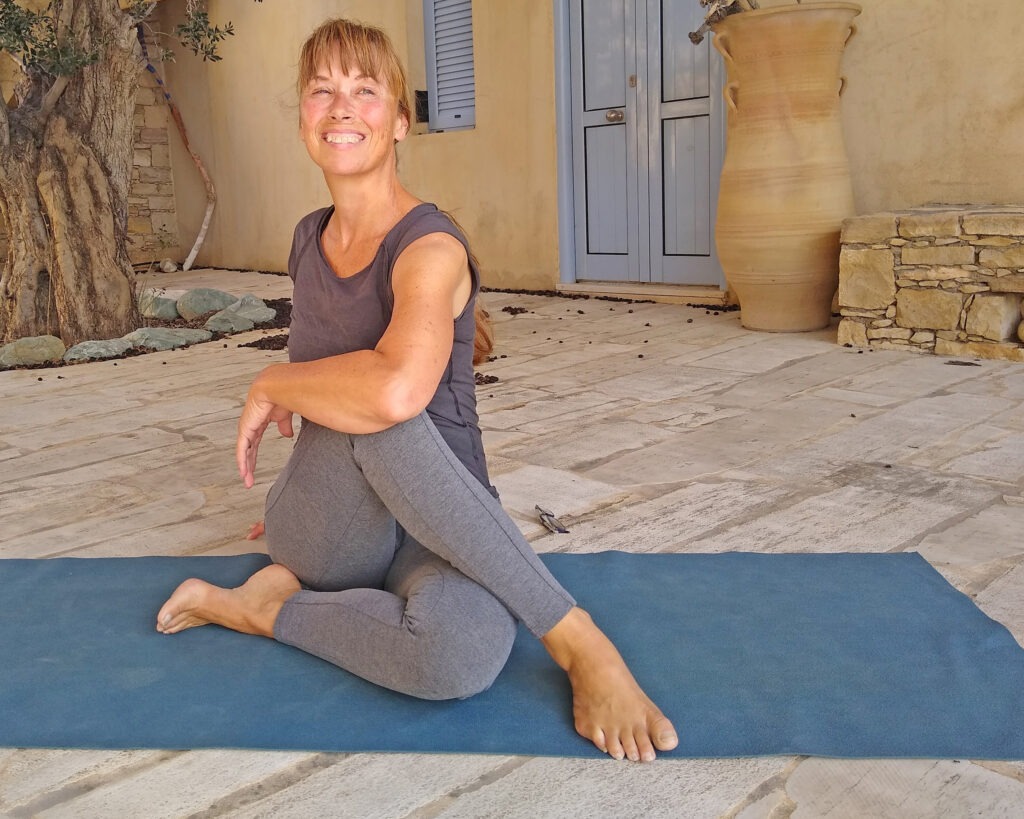
First of all, it’s important to note that flexibility gains are performance gains. Stretching your hip flexors, for example, allows you to get your hips forward when out of the saddle and drive even more power through the whole length of the leg. Good hip flexor length also allows you to drive more power through the full range of the quads when seated.
Meanwhile, better pelvis mobility – groin, ITB and hip flexors – increases efficiency by reducing wiggle on the saddle, especially when you’re tired, and better ankle mechanics allow pain-free hitting of power through the whole ankling pedal motion.
Performance gains can also come from a strong core and glutes. Good torso control keeps your sitting bones solid on the saddle, so power is driven straight to the pedal. It stops your hips swinging when you’re out of the saddle, too, driving all power straight through the pedal. Strong glutes also add power to your pedal stroke when standing.
“The multi-directional movement of yoga, plus all that stretching, helps you recover faster. Your ride the day after yoga will feel easier.”
But your glutes and abs aren’t really trained during a cycling class: the forward hunched position means your abs won’t fire, and sitting on your butt means you don’t use your glutes much. You’ll need to train these muscles elsewhere, and yoga is the perfect solution.
Then there are the recovery and injury prevention benefits of yoga. Its multi-directional movement and stretching helps you recover faster. You flush out metabolic waste, pump fresh blood through, untether tissues that have become stuck and tight, and re-set the length of your muscles. You feel less fatigued and your ride the day after yoga will feel easier.

By lengthening shortened muscles, a good yoga class also reduces niggles and chronic problems. Free from pain, you’re then back to adopting efficient positions on the bike, able to increase your time in the saddle and continue cycling for years to come.
On the flip side, fail to stretch alongside all your cycling and you’ll develop loads of compensatory ways of moving; you’ll get too stiff to move with good posture. This will injure you in unpredictable ways and make living a full life difficult. You might still be comfortable on the bike – that fixed position ends up being the most comfortable – but your everyday movement gets less and less.
And, of course, a hunched, rounded upper-back position on the bike eventually becomes a hunched, rounded upper-back position in life too: probably not the look you’re after!
In short, yoga as a complement to cycling works. You’ll feel easier and freer. You’ll injure less and chronic problems will slowly subside. Your efficiency and power output on the bike will improve. You’ll increase your training and go on for longer. Your body and your cycling will love you for it.
Sarah Ramsden is a registered teacher with www.yogaallianceprofessionals.org
Shelly Zehari
Co-owner, Fit House – Israel
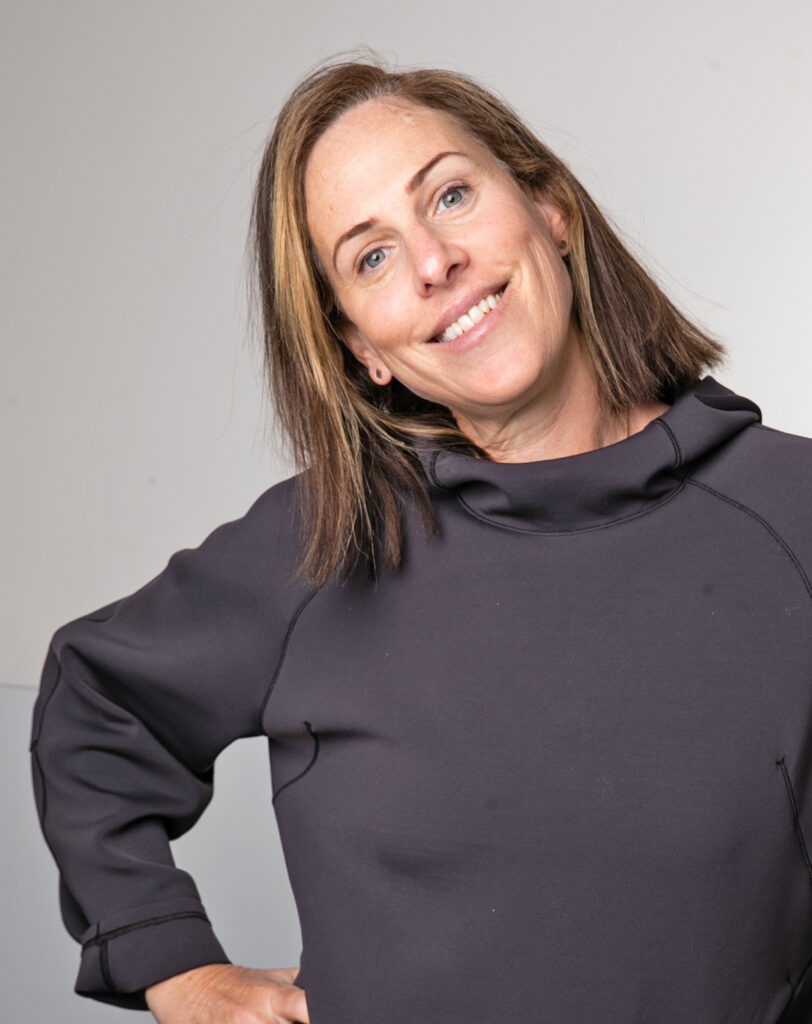
At Fit House, we believe people should be able to do cardio, stretching, stability, strength and core work all in one place, so we have four studios under one roof: cycling, pilates reformer, barre and functional.
We also mix and match as part of this approach. For example, one of our signature classes – Arms Booty Core Cycling (ABC Cycling) – combines pilates and cycling in the same class. You do an interval on the bike, then come off and do some pilates arm exercises before getting back on the bike, then off again for pilates core work, and so on. You get your cardio hit from cycling, but you also train your arms, core and glutes in a series of pilates exercises.
People love it, because in 60 minutes they get a full-body cardio and strength workout. It also introduces cyclists to pilates, and pilates enthusiasts to cycling, which is great. We run our ABC Cycling class six times a day, it’s so popular.
“We’re very clear in our belief that all our disciplines are deeply connected, and that doing a bit of everything will get you better results”
But importantly, this isn’t just for a novelty factor. We’re very clear in our belief that all our disciplines are deeply connected, and that doing a bit of everything will get you better results. For example, the data gathered by our BODY BIKES shows that people get more out of their cycling workouts if they also do pilates: better RPM, better power output, better calorie burn. We have hard evidence to prove this.
Why? It all starts with the way you sit on the bike. If you do pilates, you know how to hold your body in the various positions you adopt on the bike. You know how to engage your core, you know how to breathe, you have the strength in your shoulders to stay high. Your chest is open, everything is open, and you’re stronger in every position so you’re supporting your body properly. In turn, you feel better, stronger, and can work harder. You maximise everything you do on the bike.
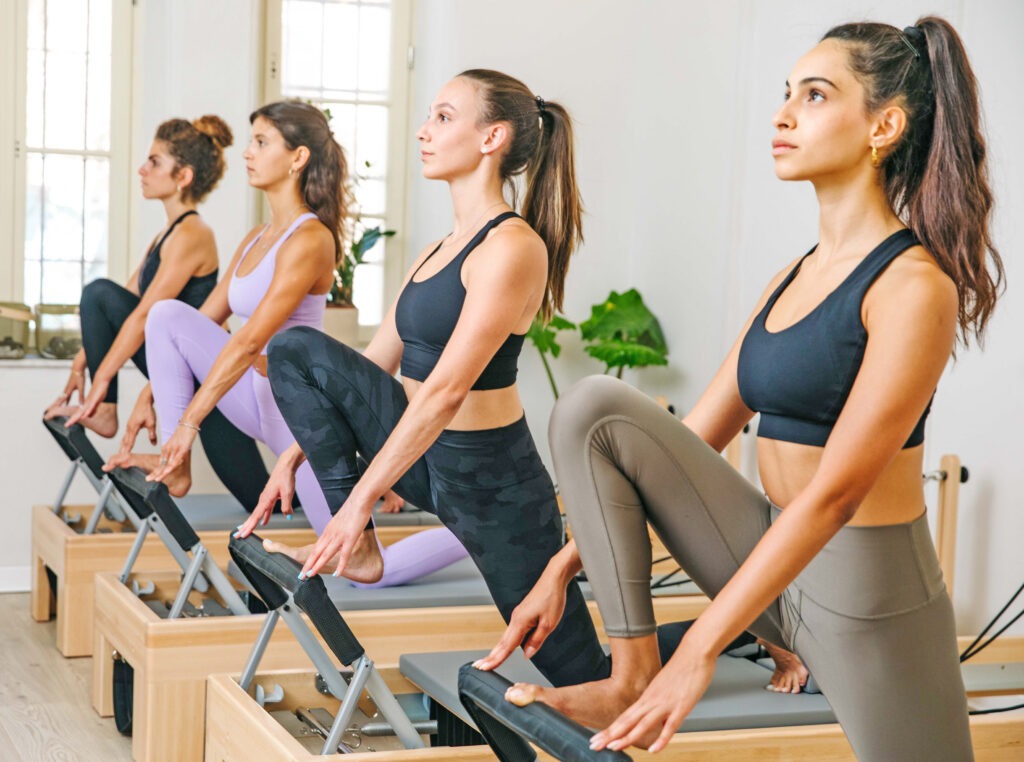
You also don’t get to the end of a cycling class feeling like you’ve only worked your quads: you’ve engaged your body properly, so you feel it in your glutes and hamstrings too. You’re also less likely to suffer pain in your lower back after an hour on the bike, because you’ll have engaged your core throughout the class.
Pilates and cycling really is such a great combination. Cycling isn’t just about getting on a bike and moving your legs; the body awareness and strength you get from pilates helps you get so much more out of it.

